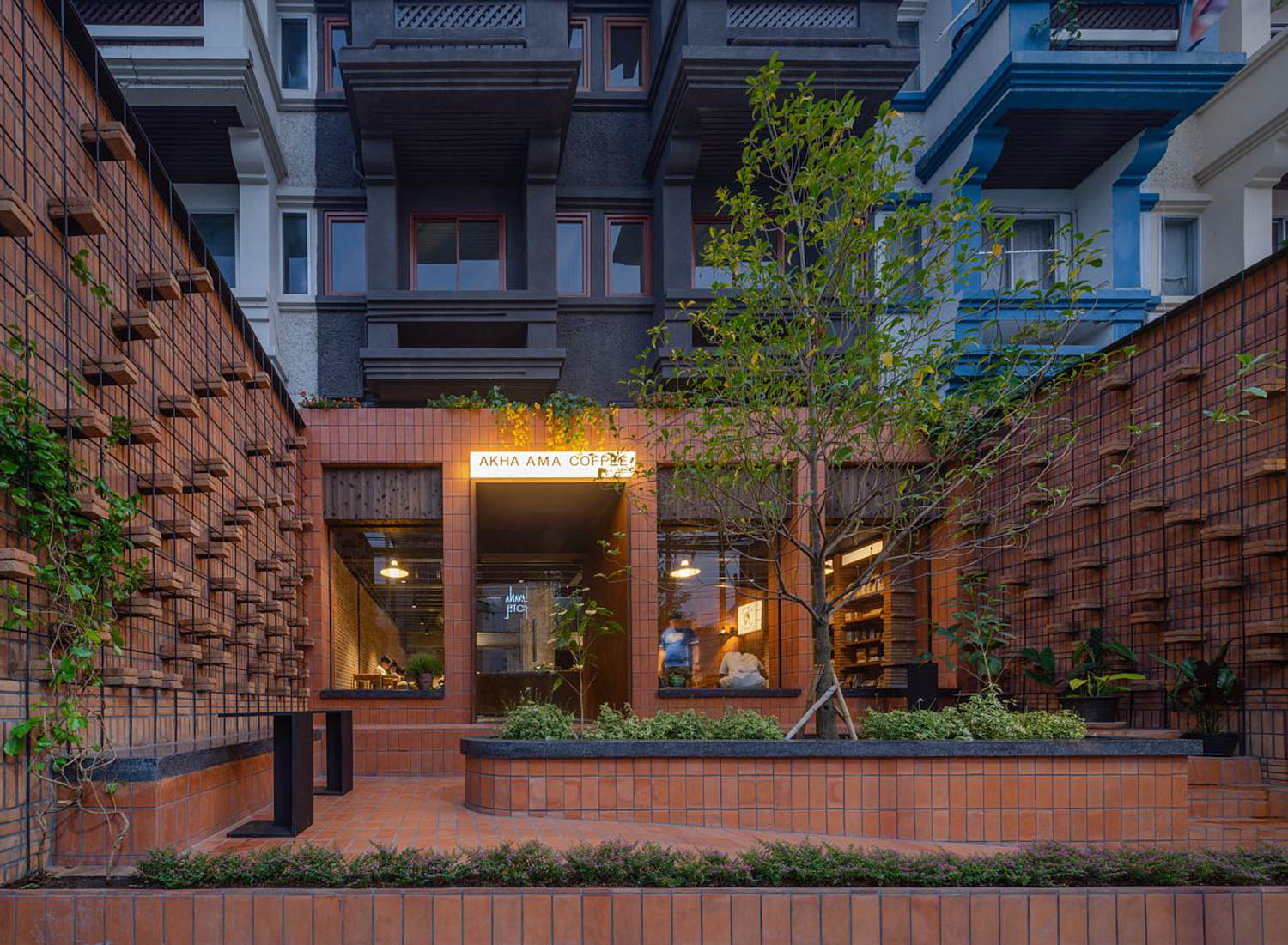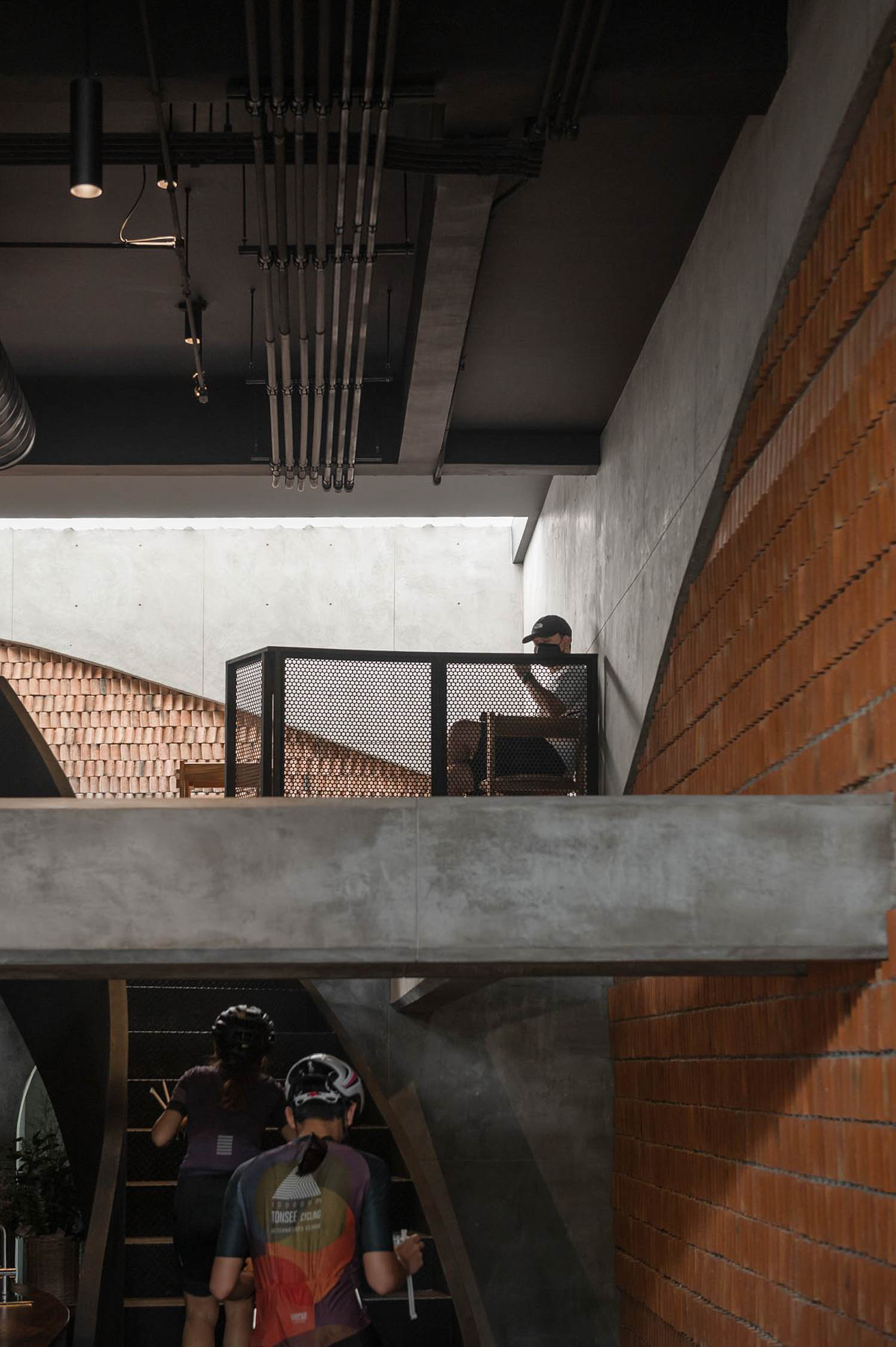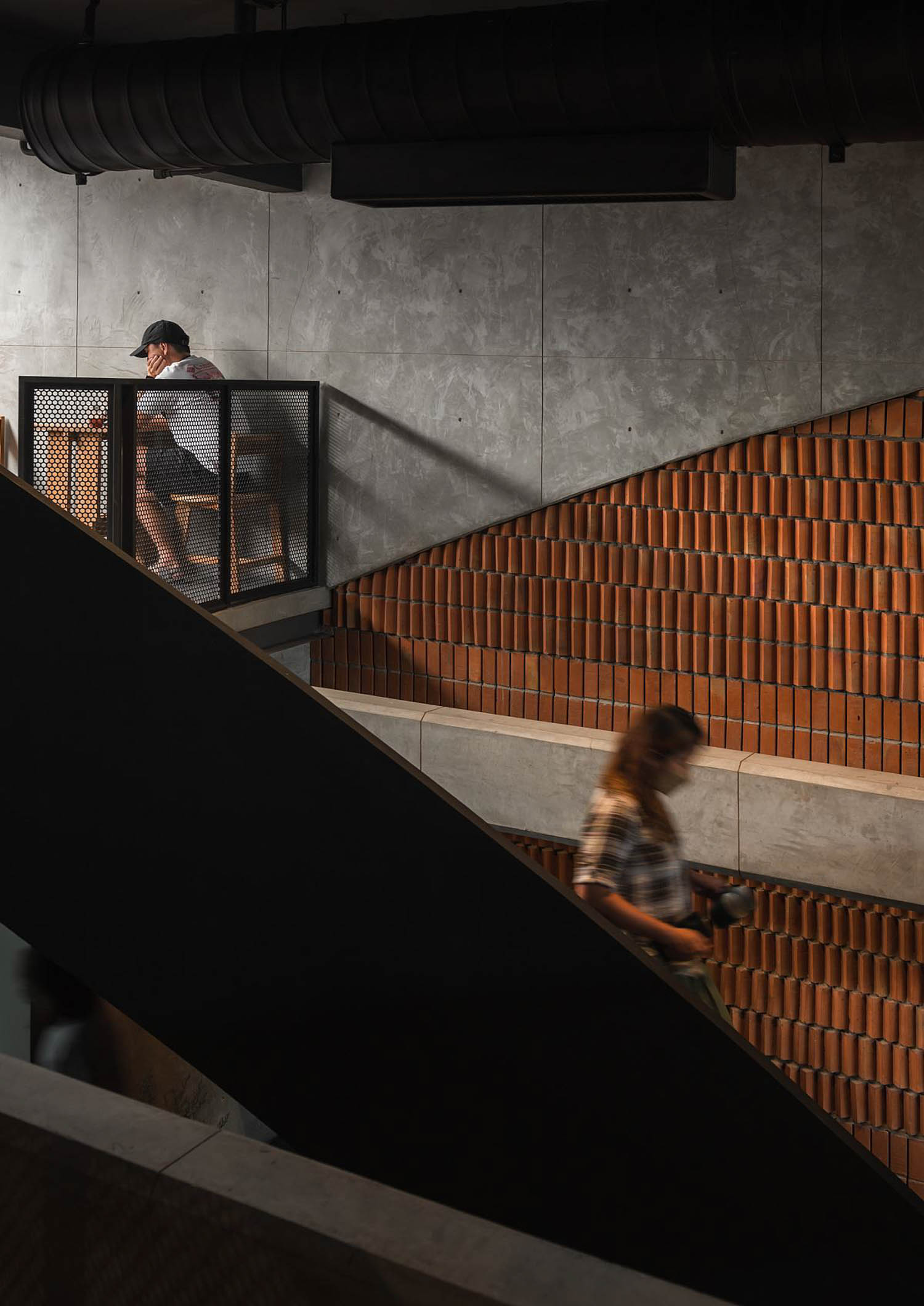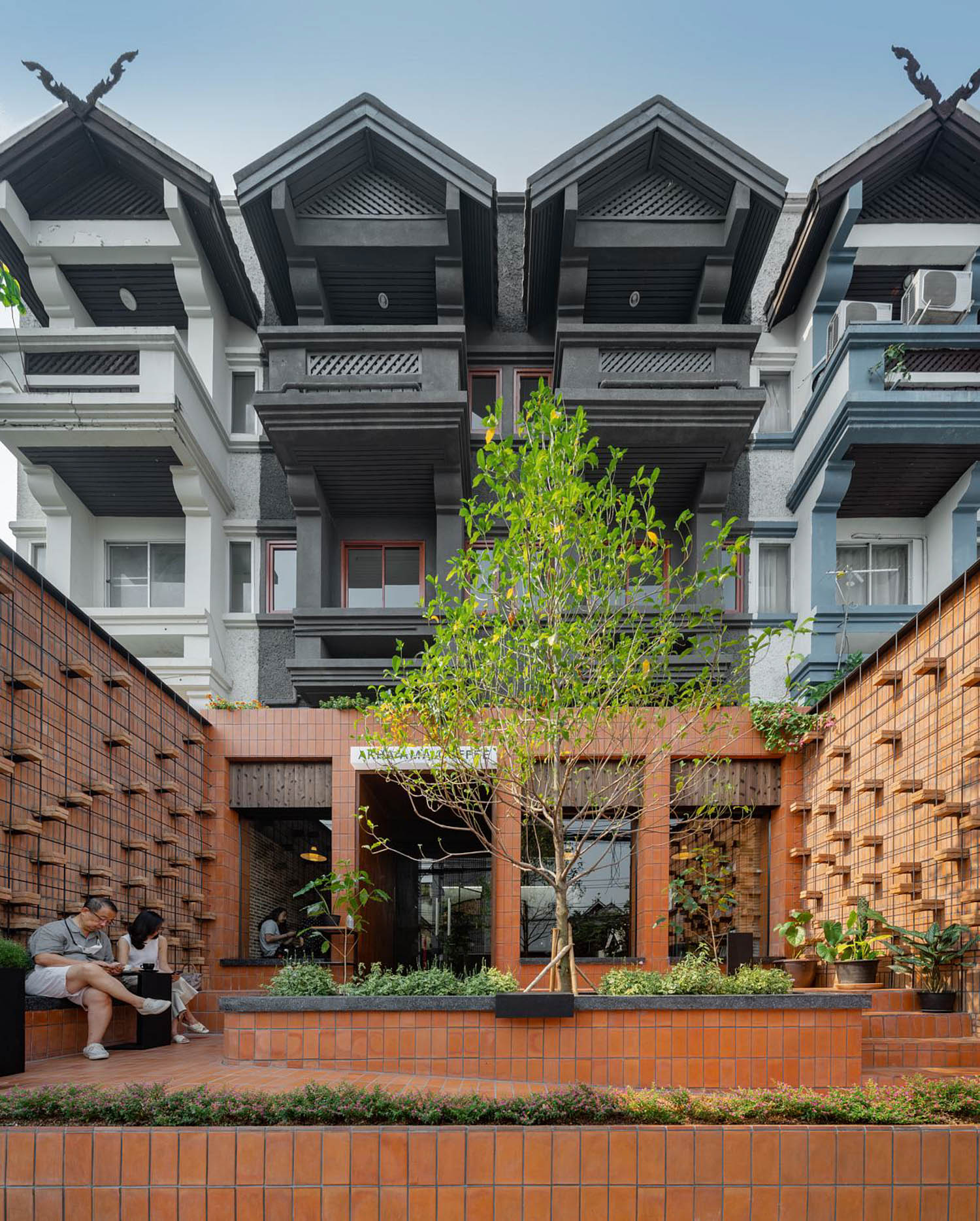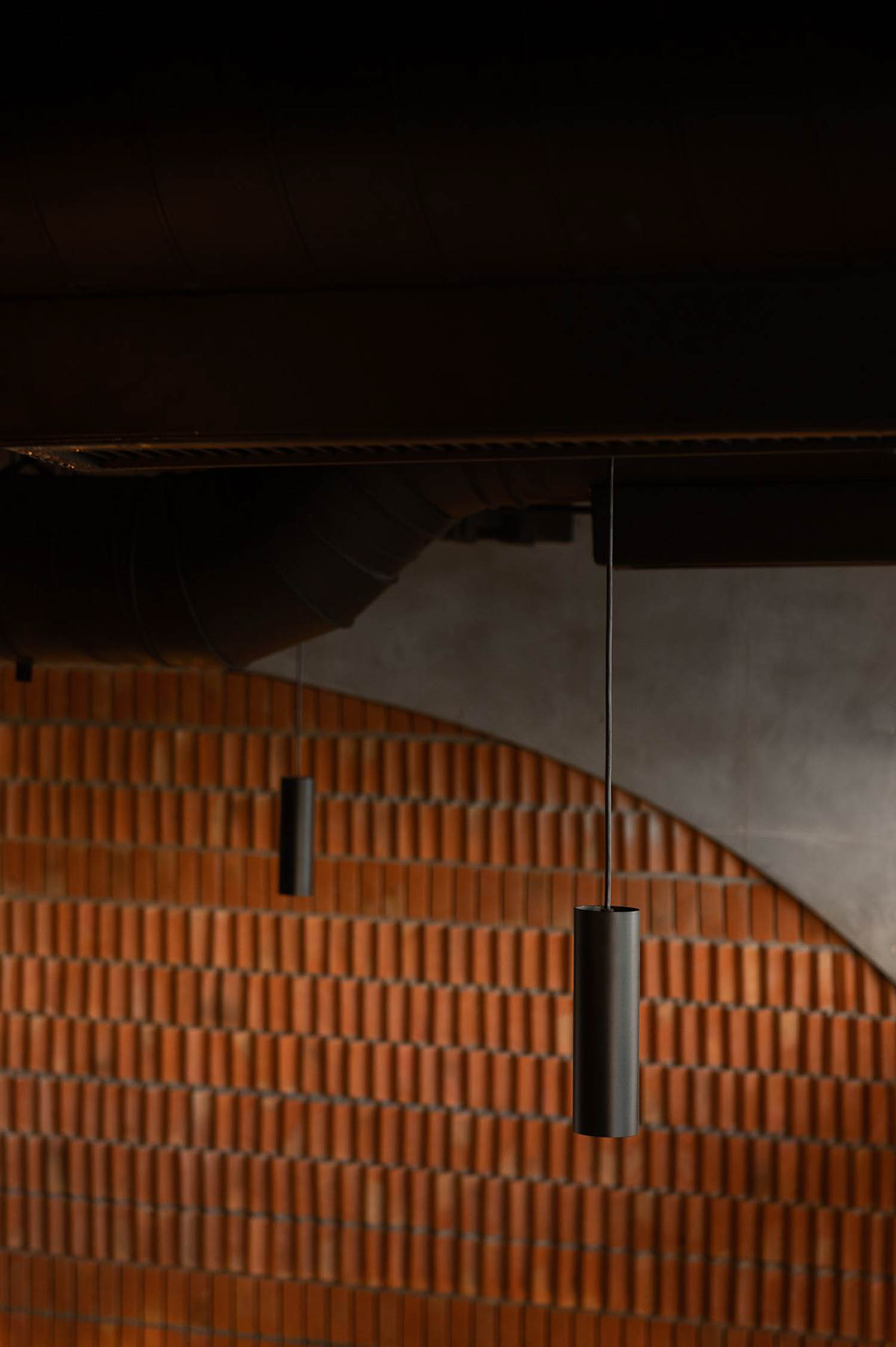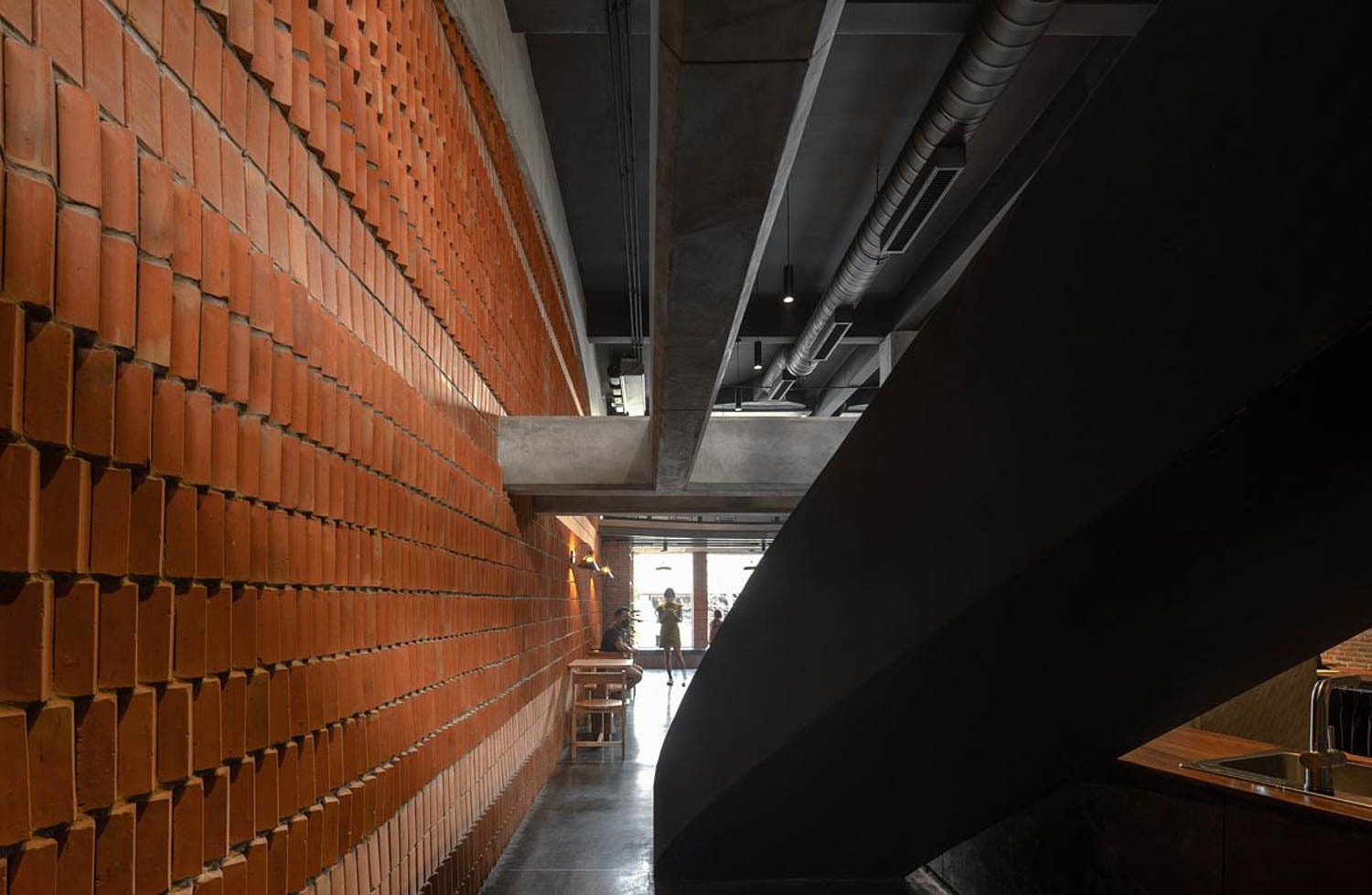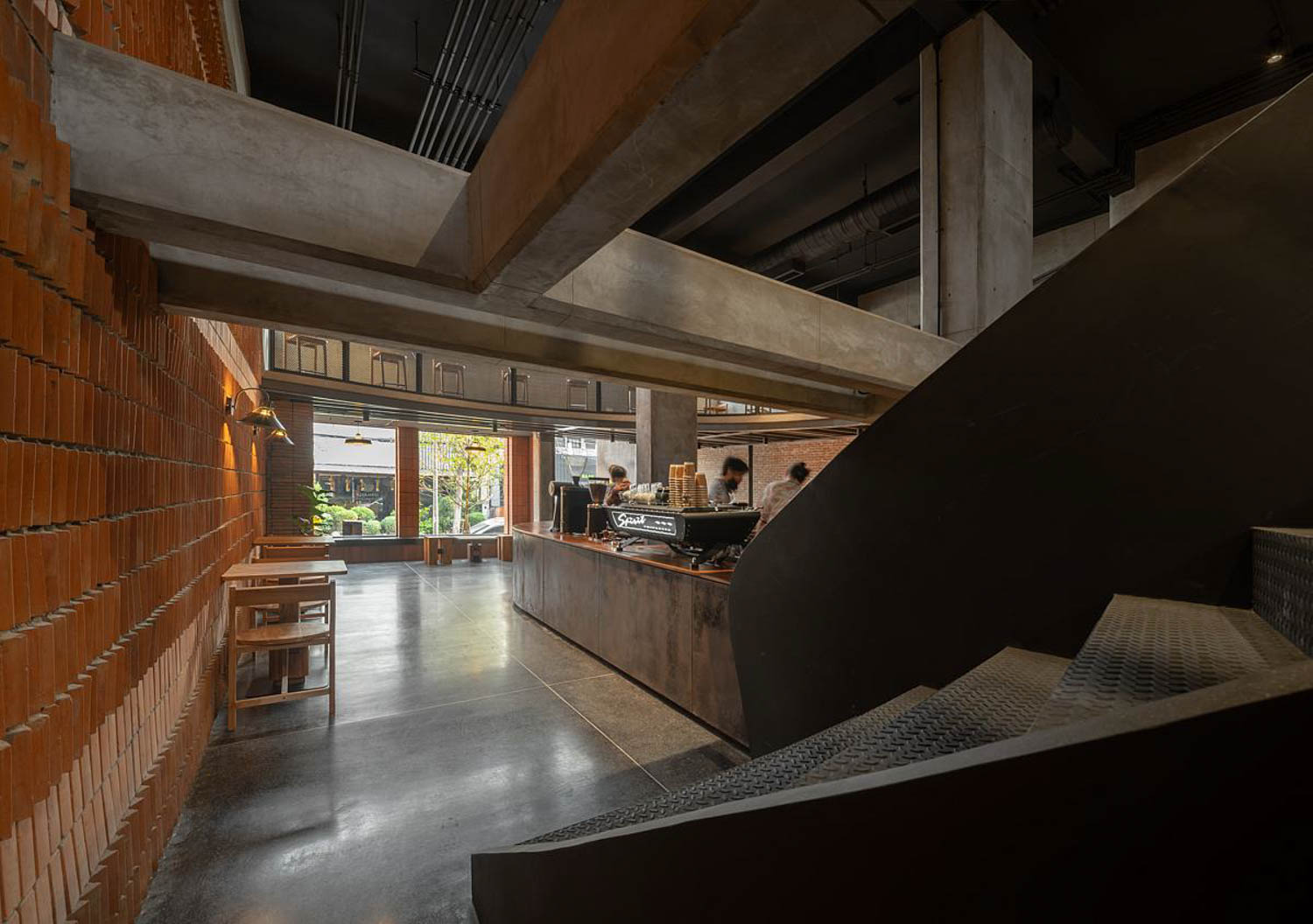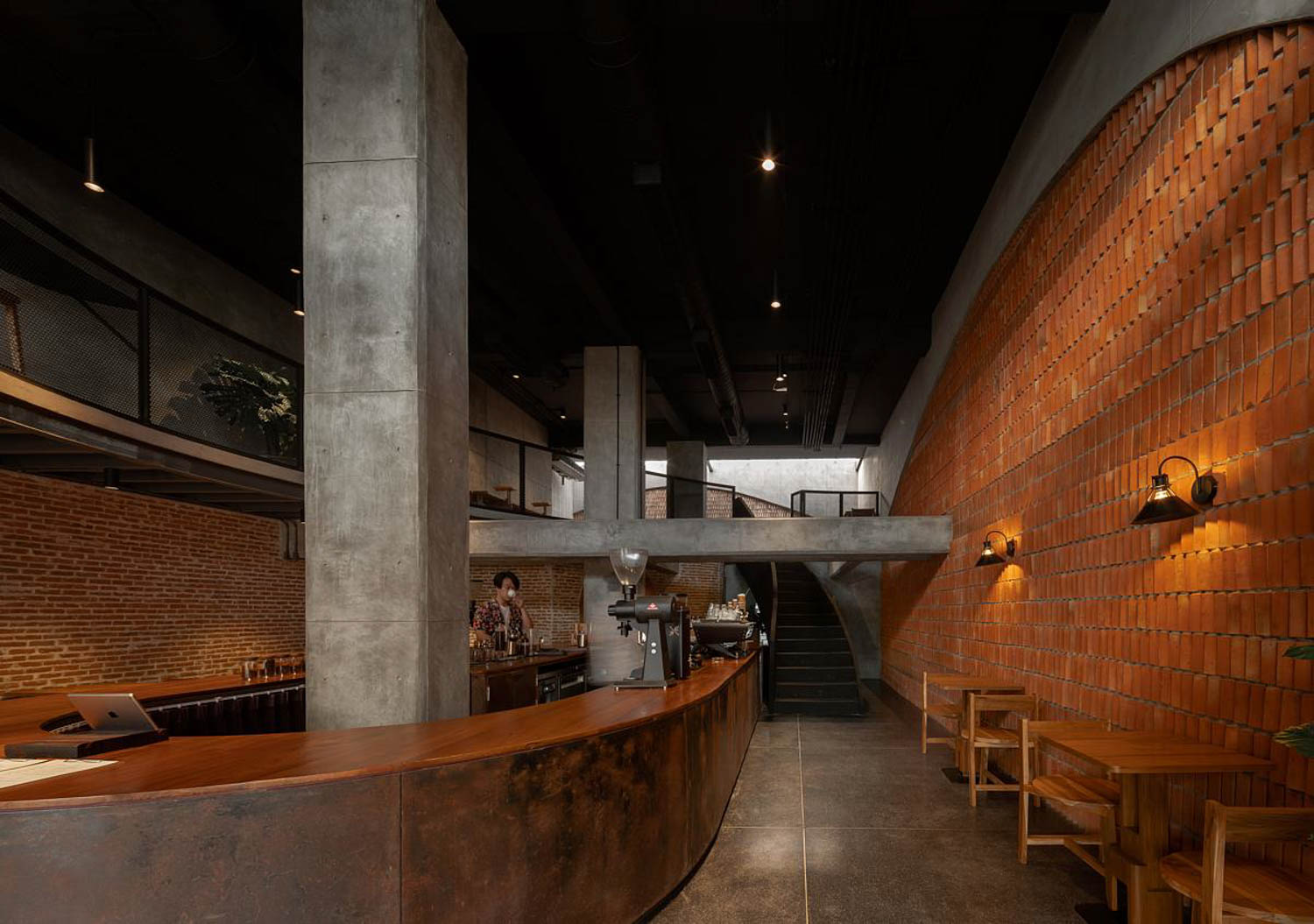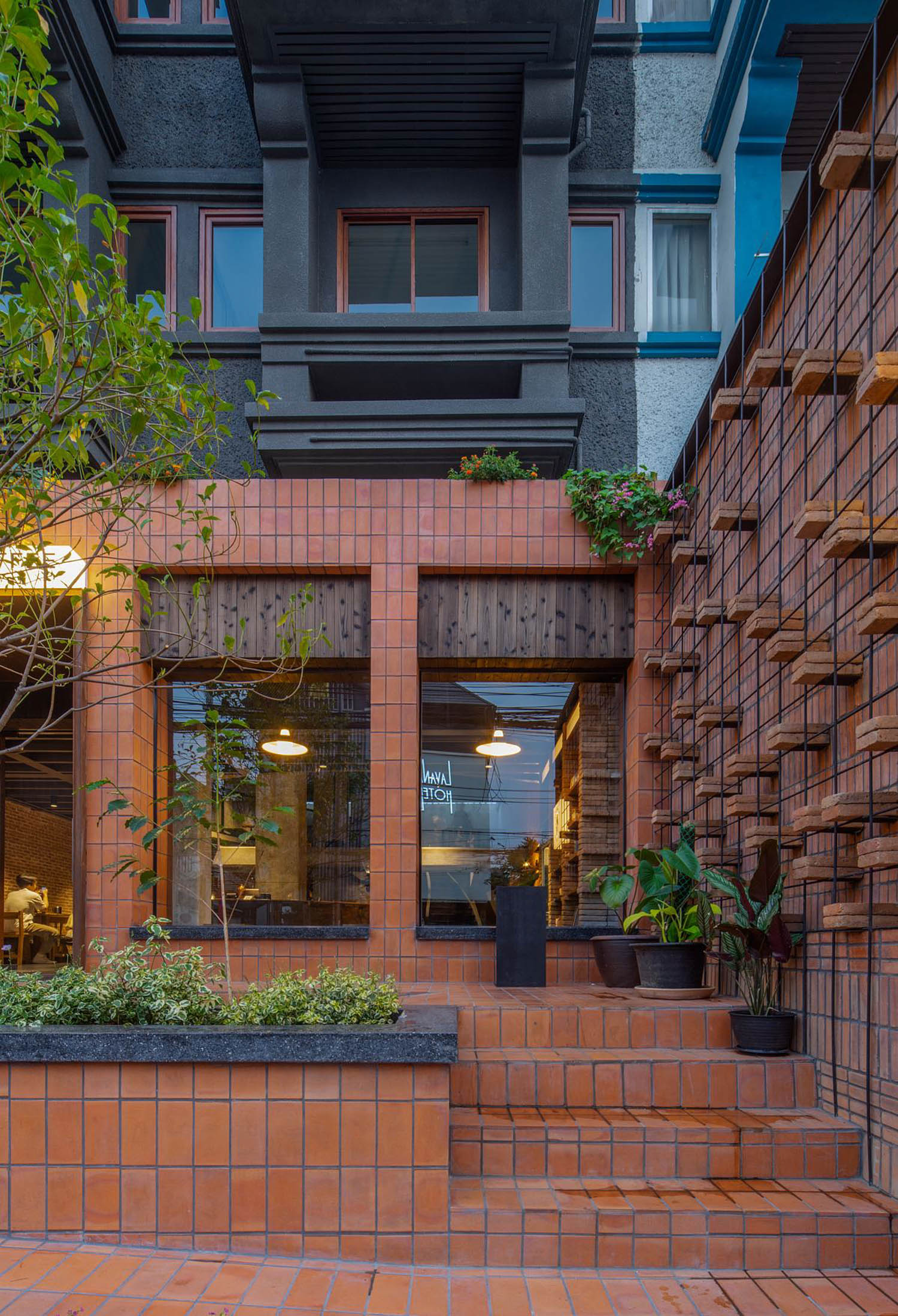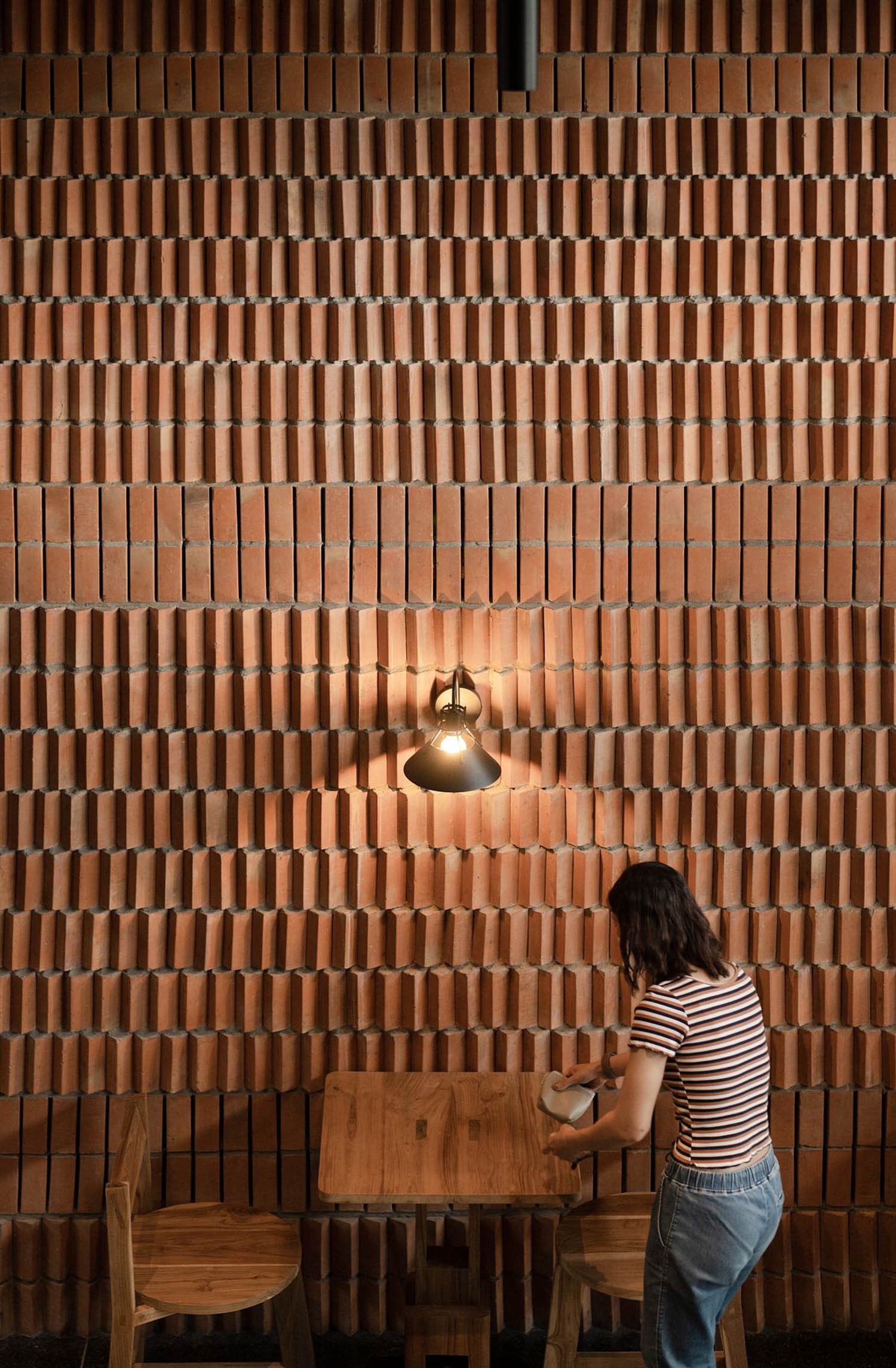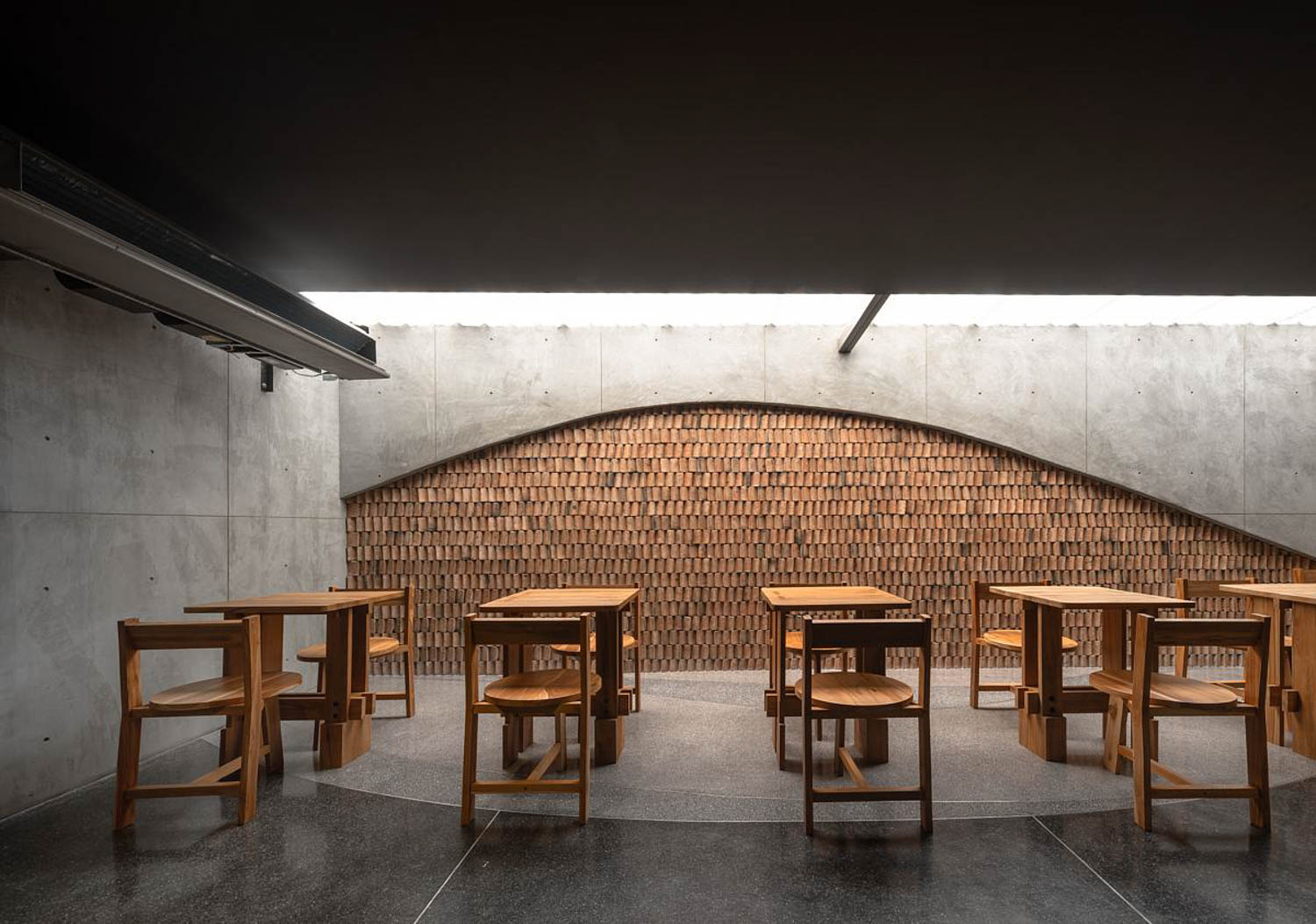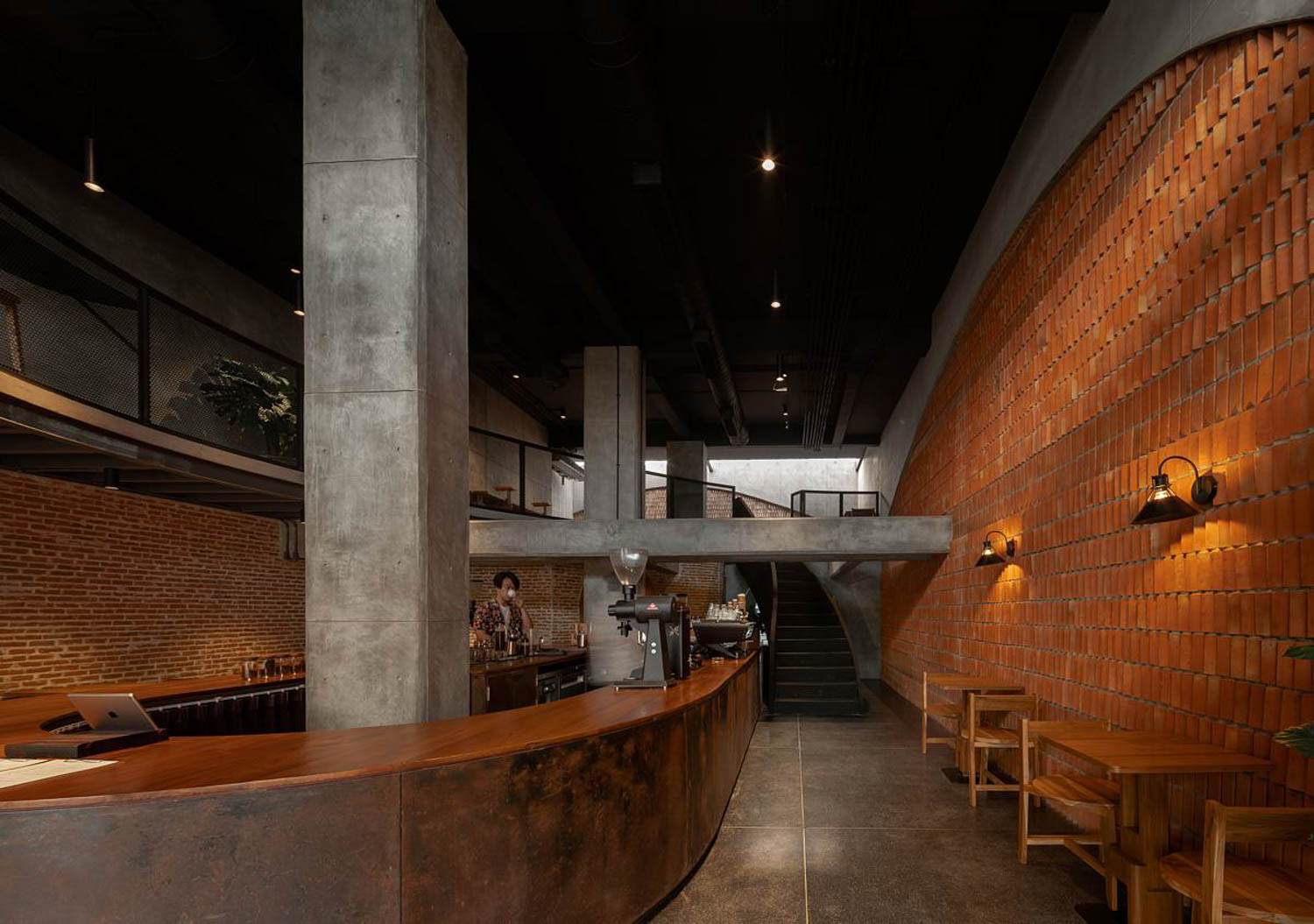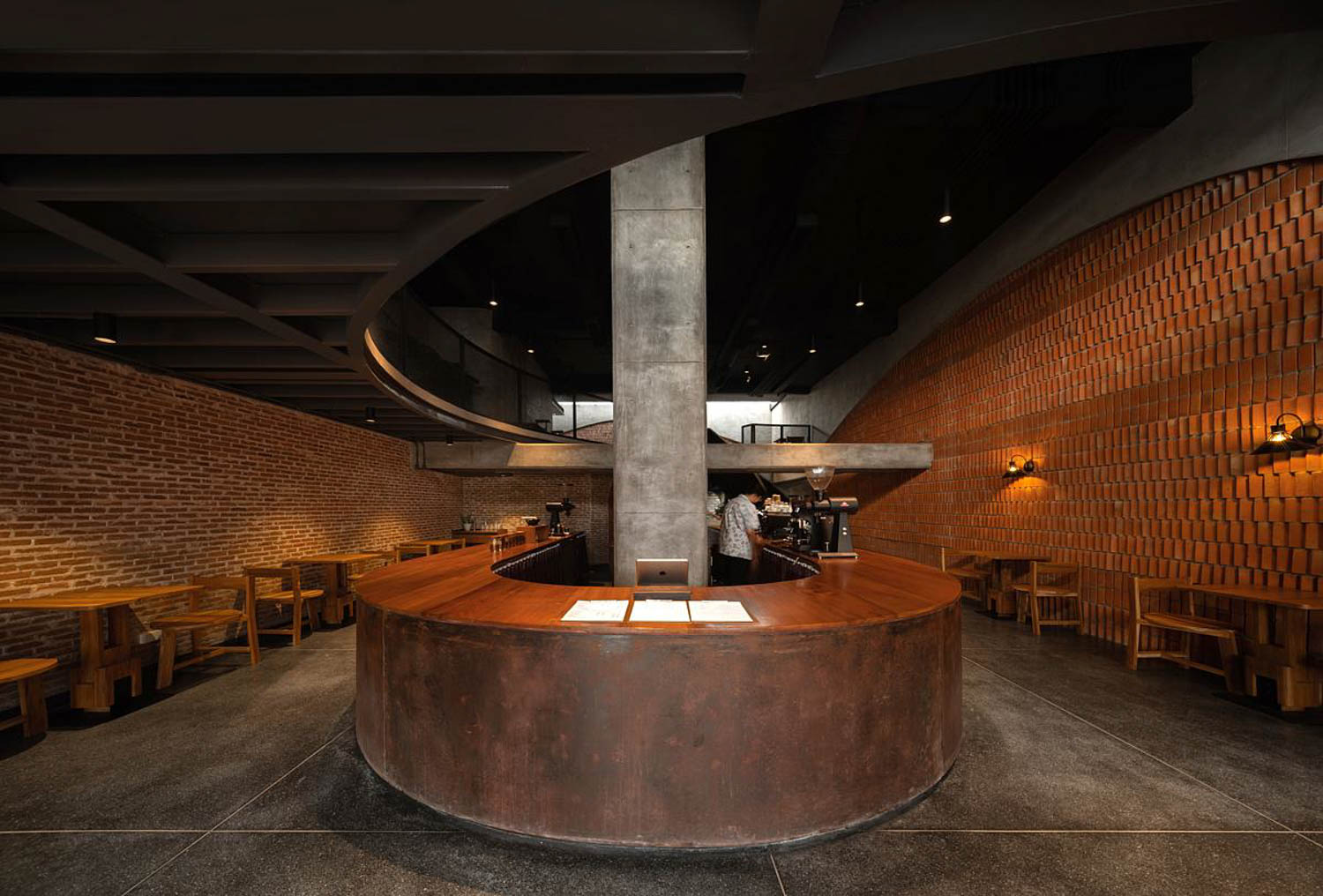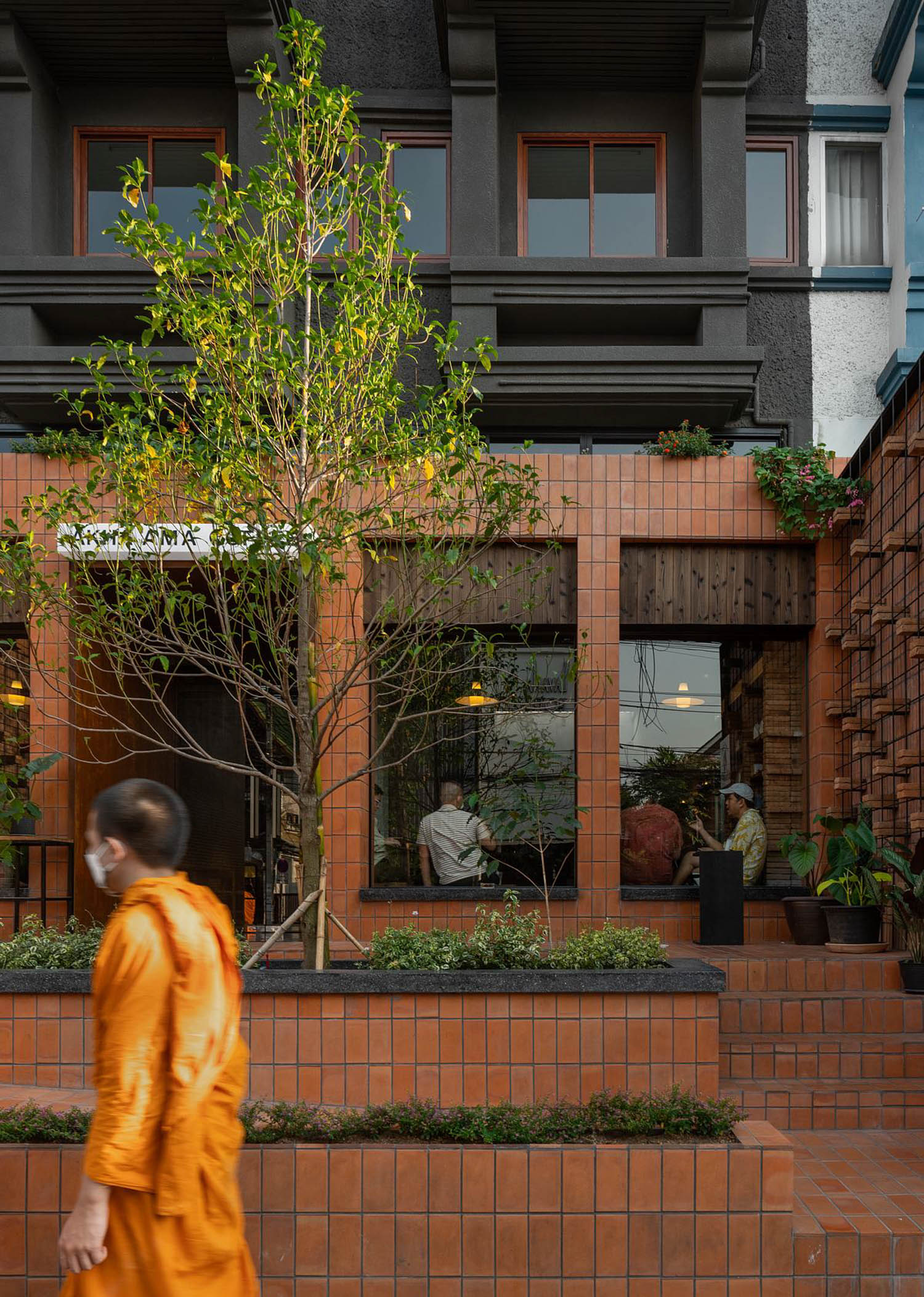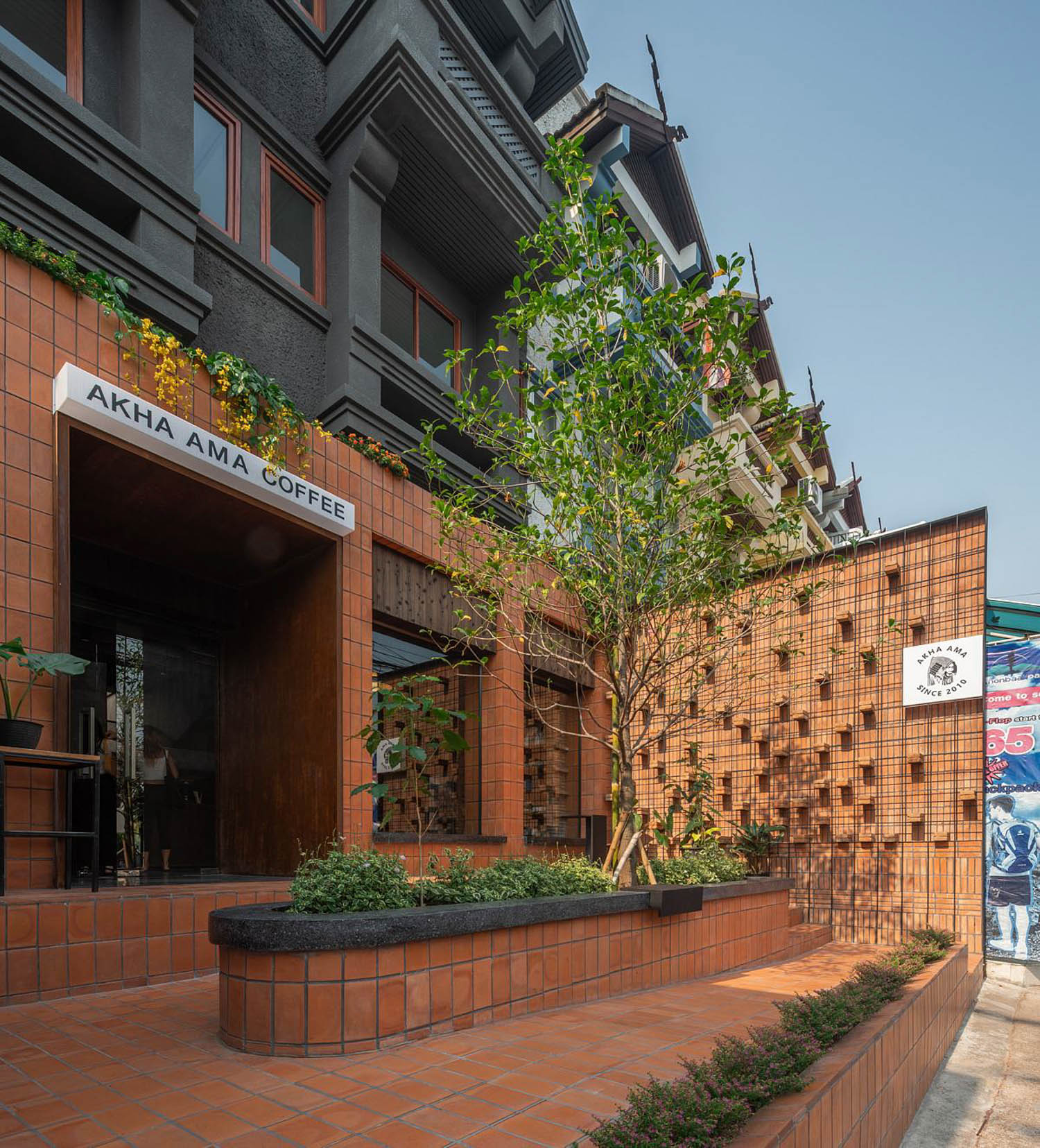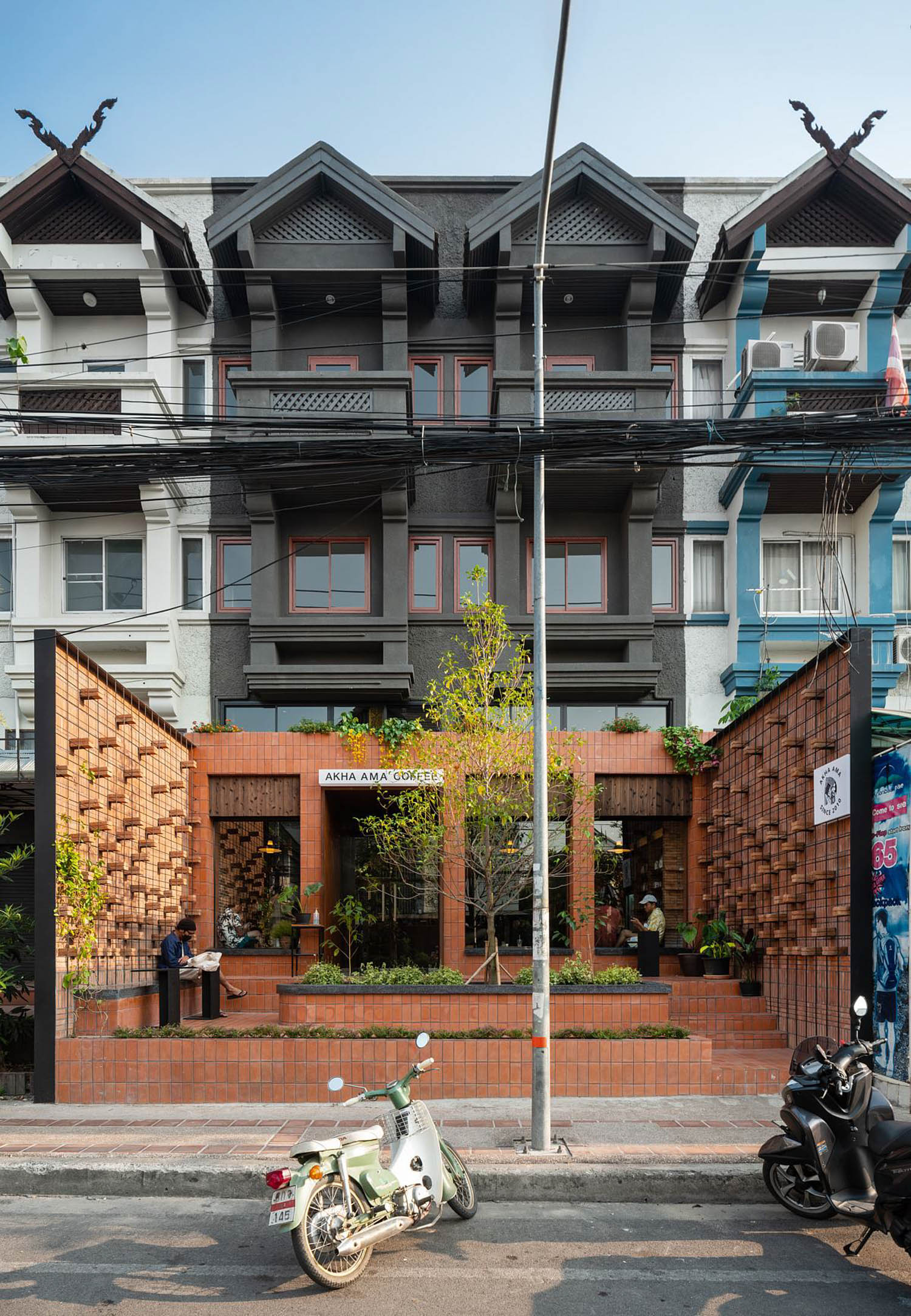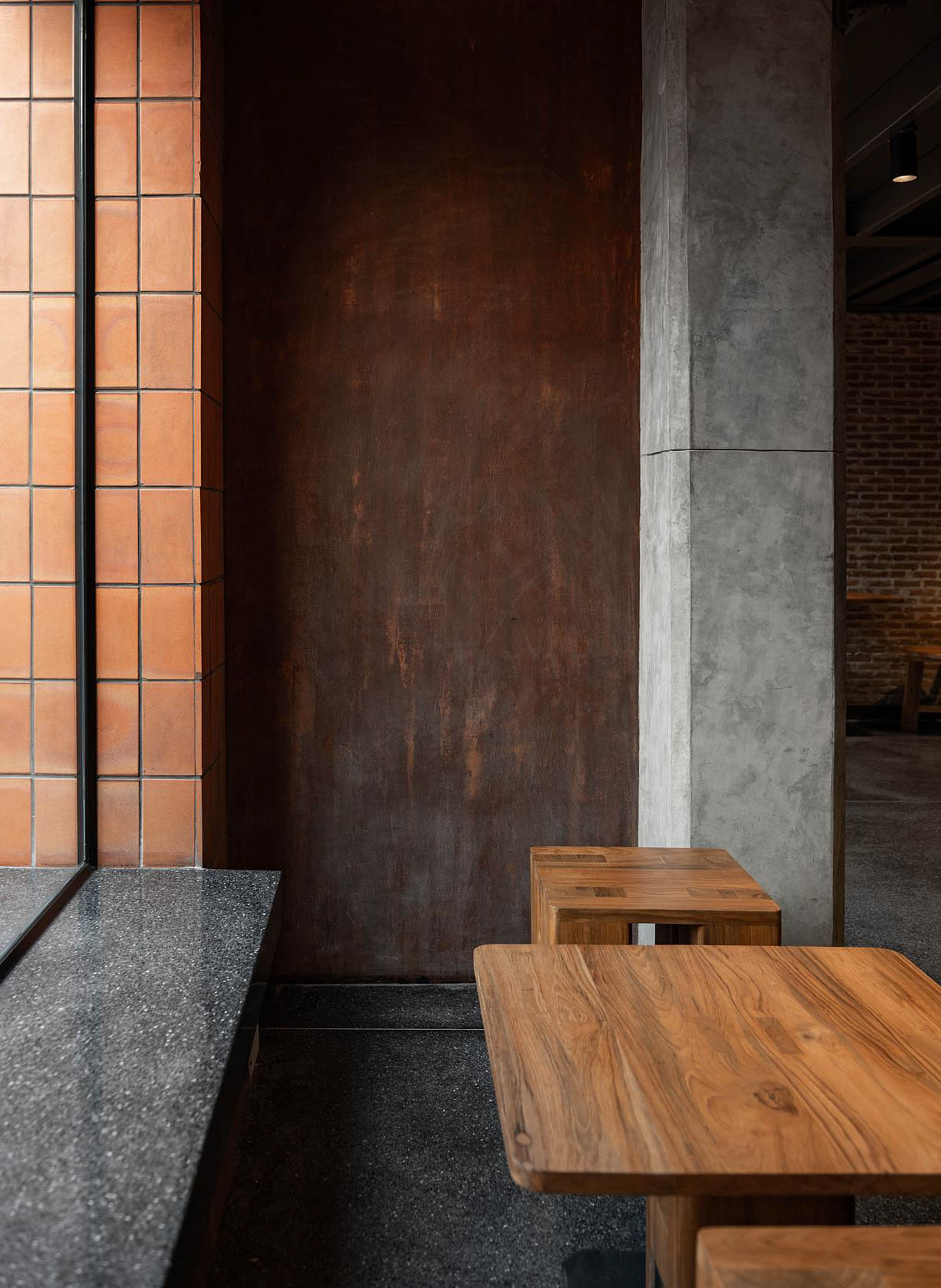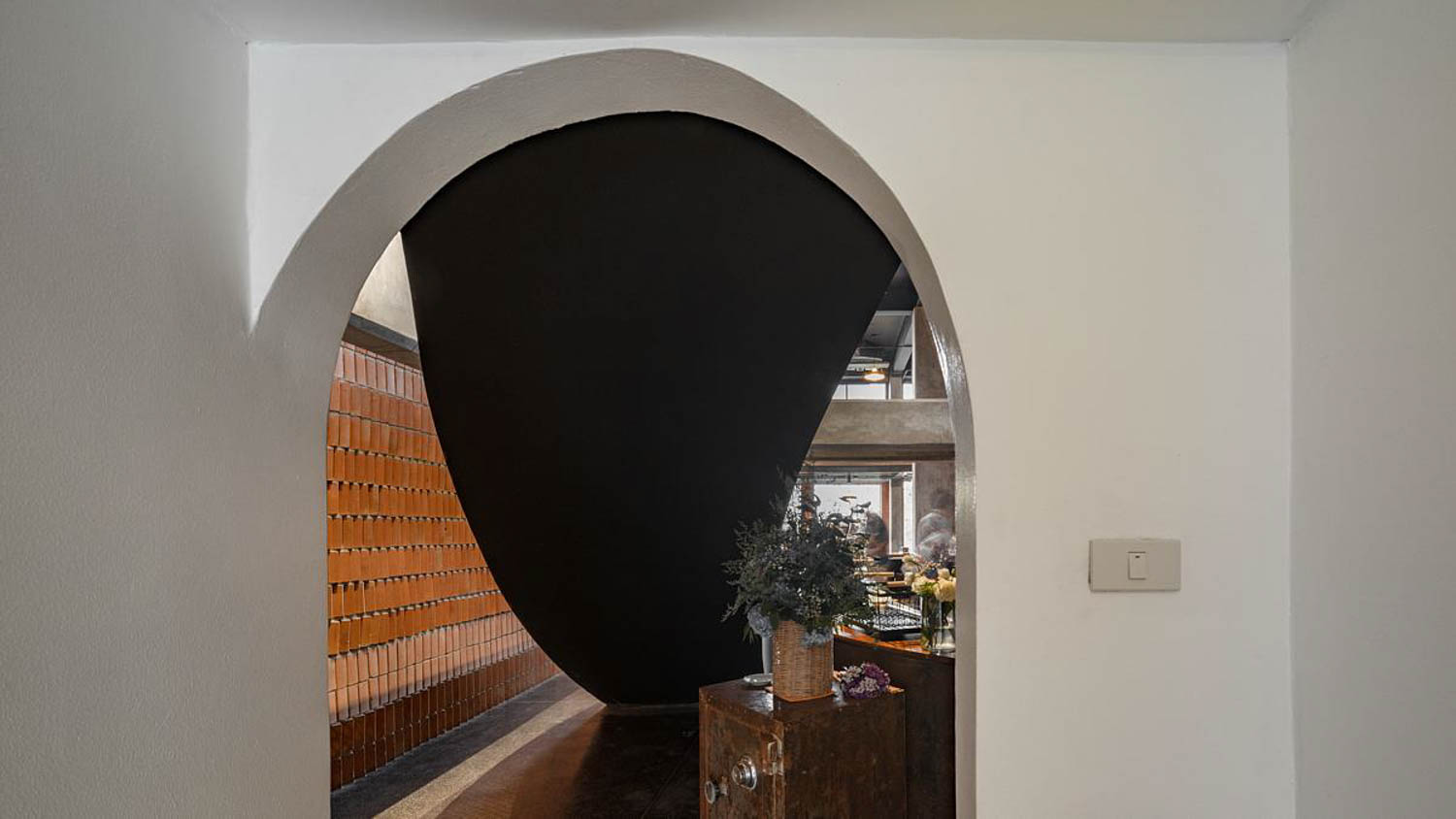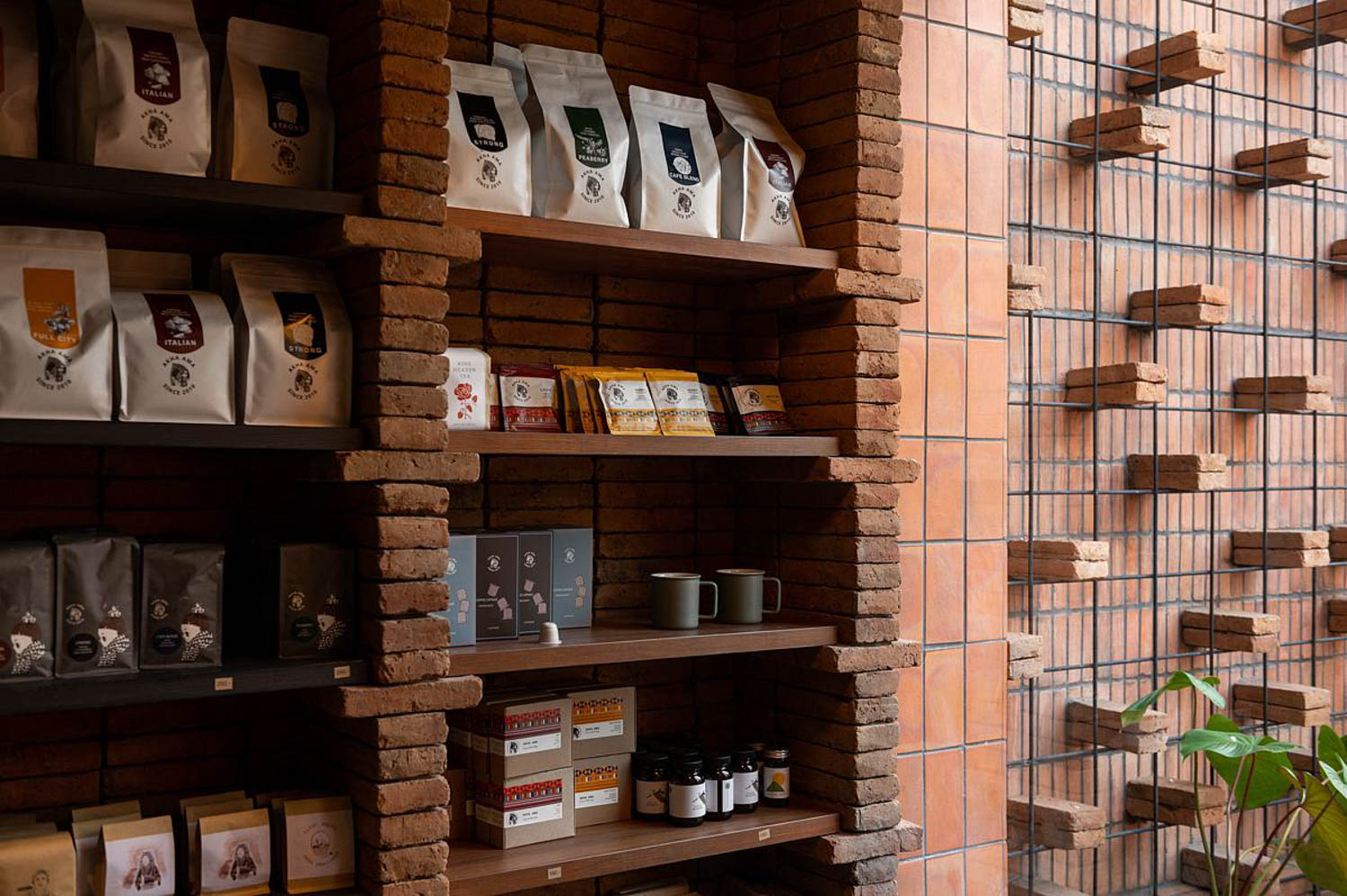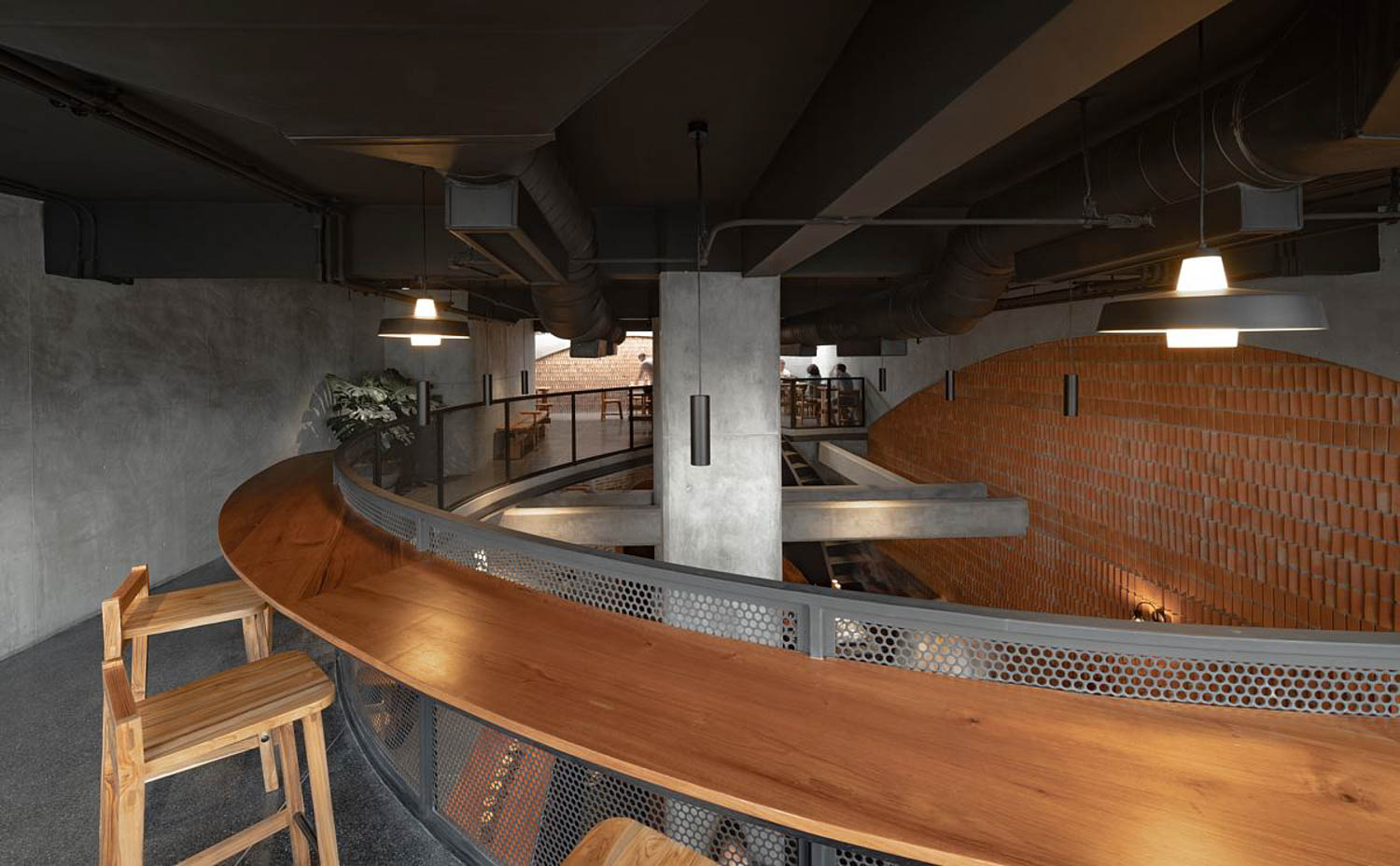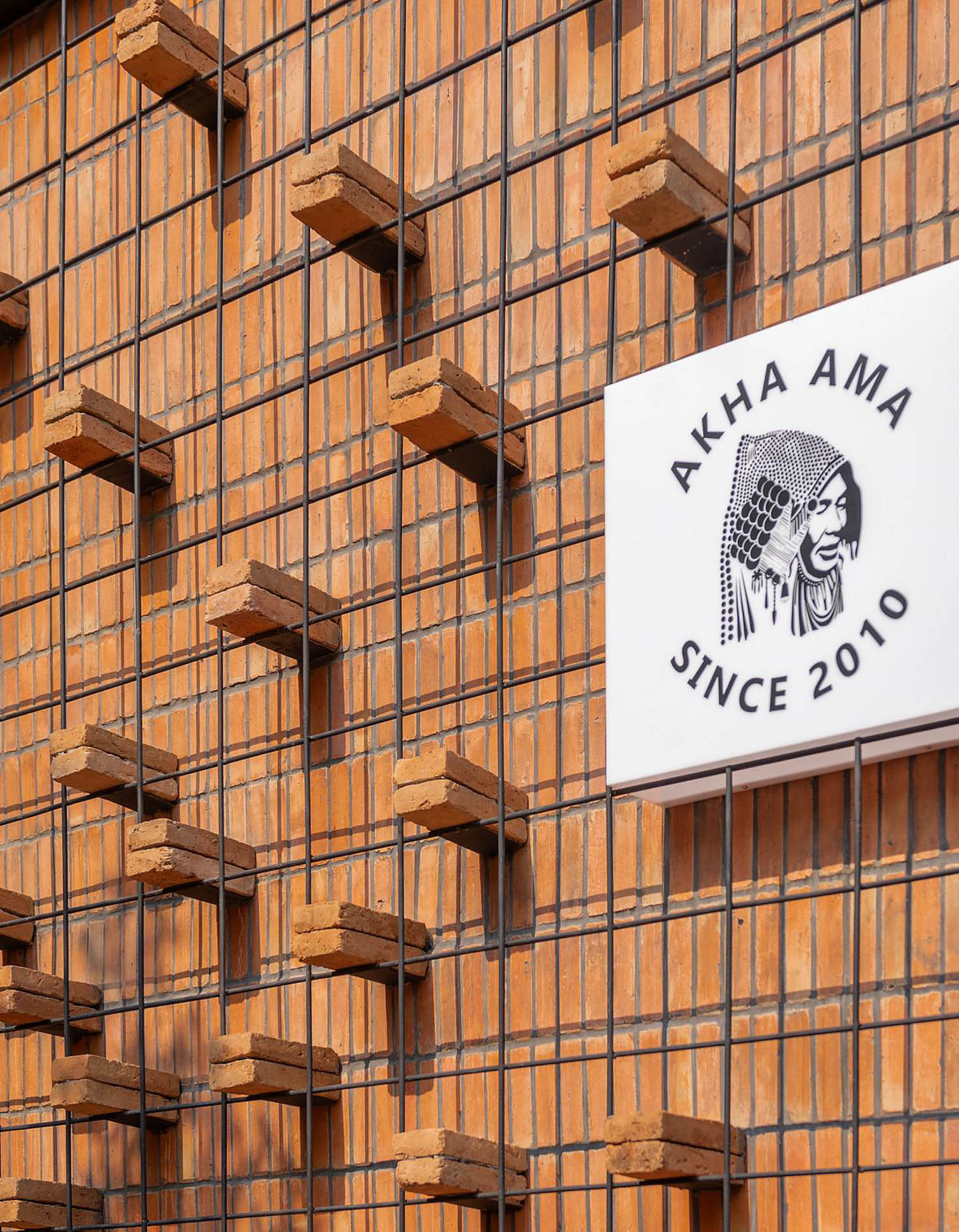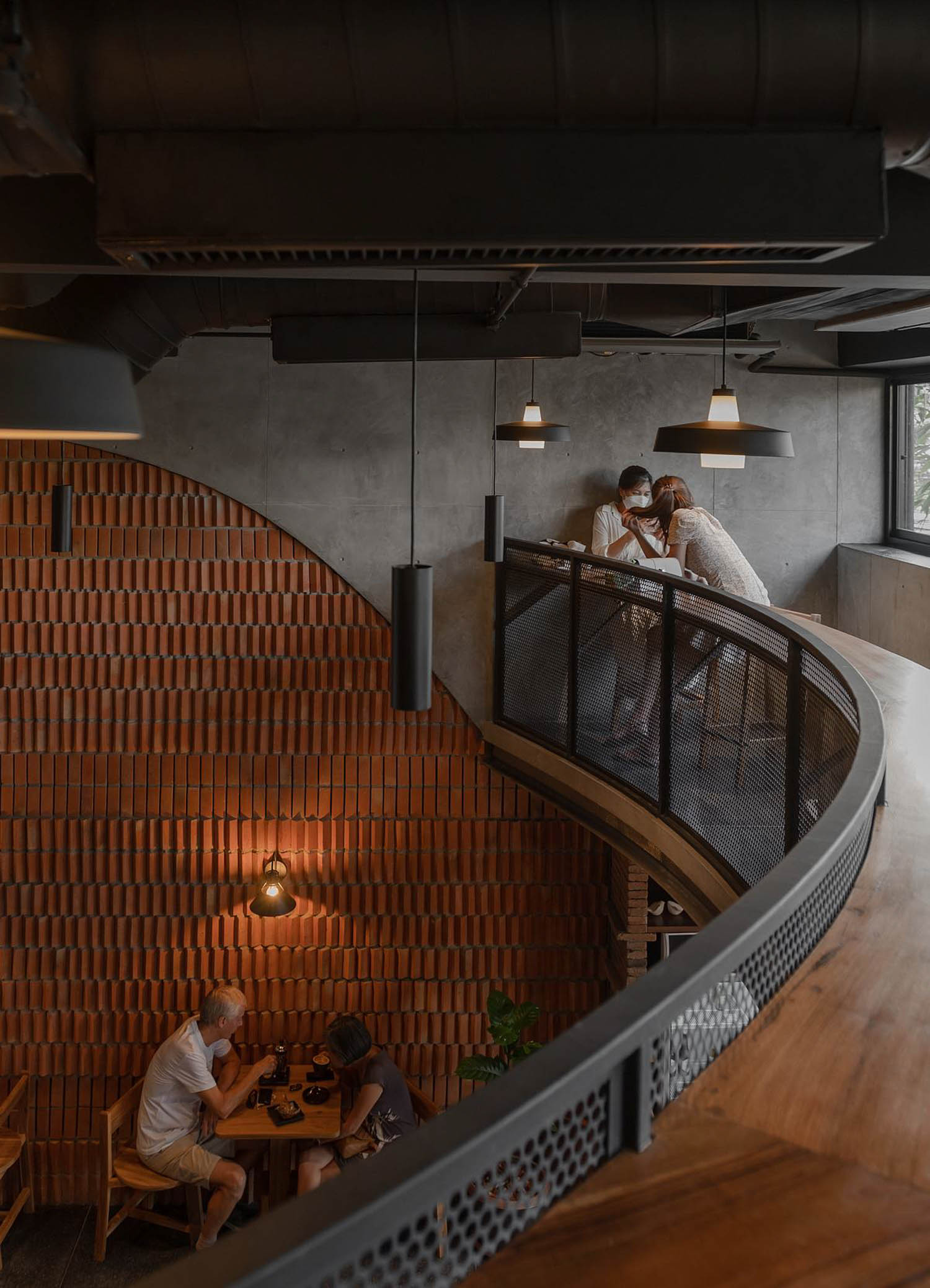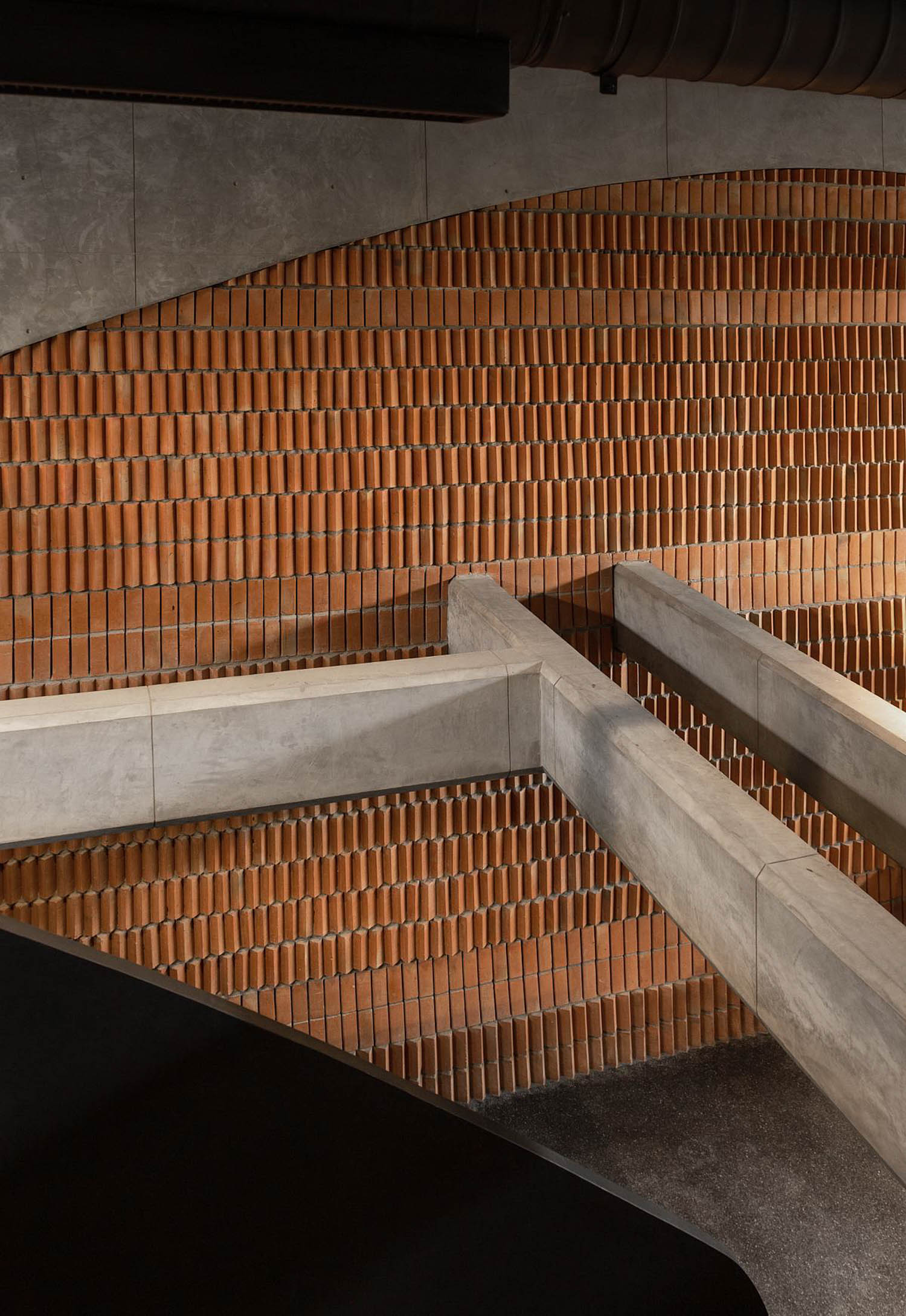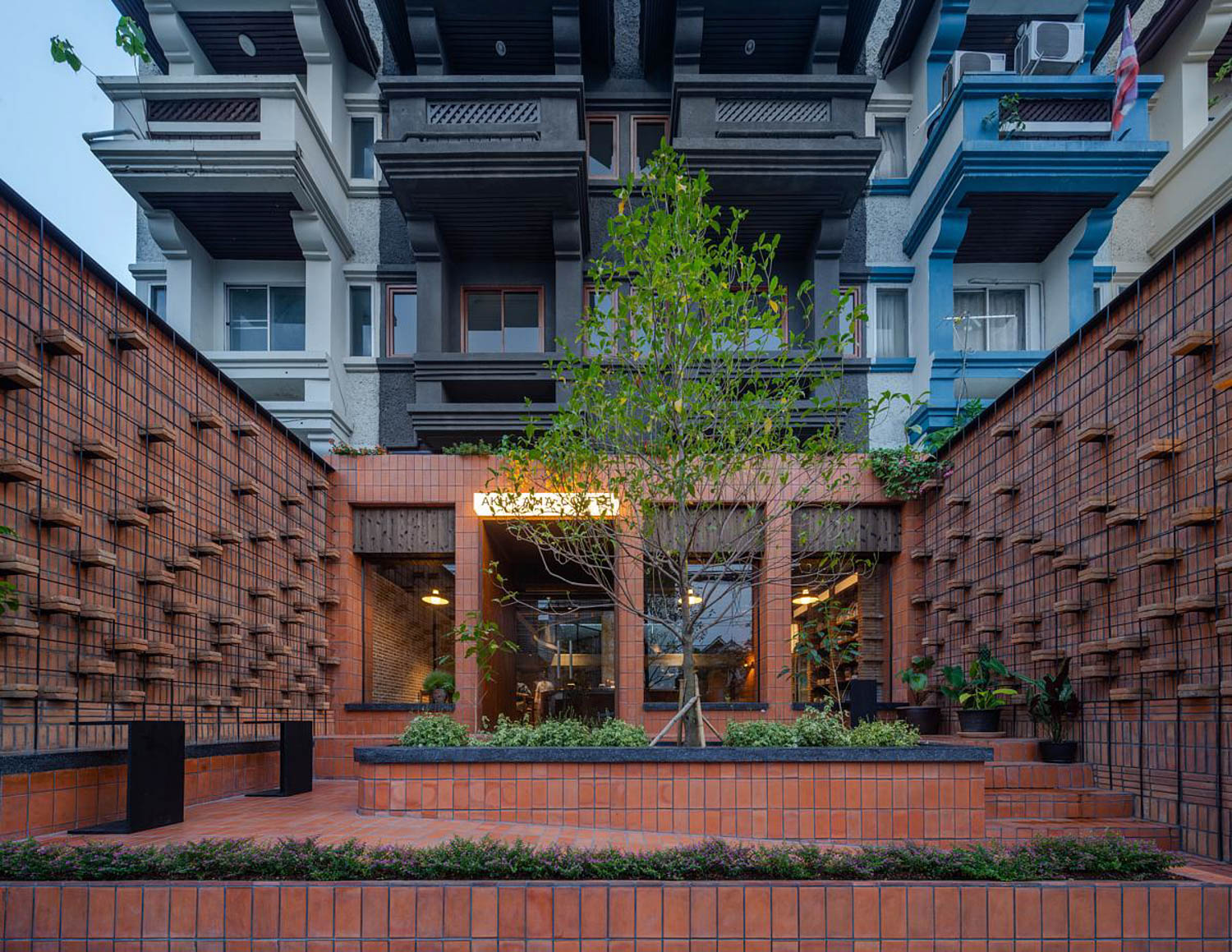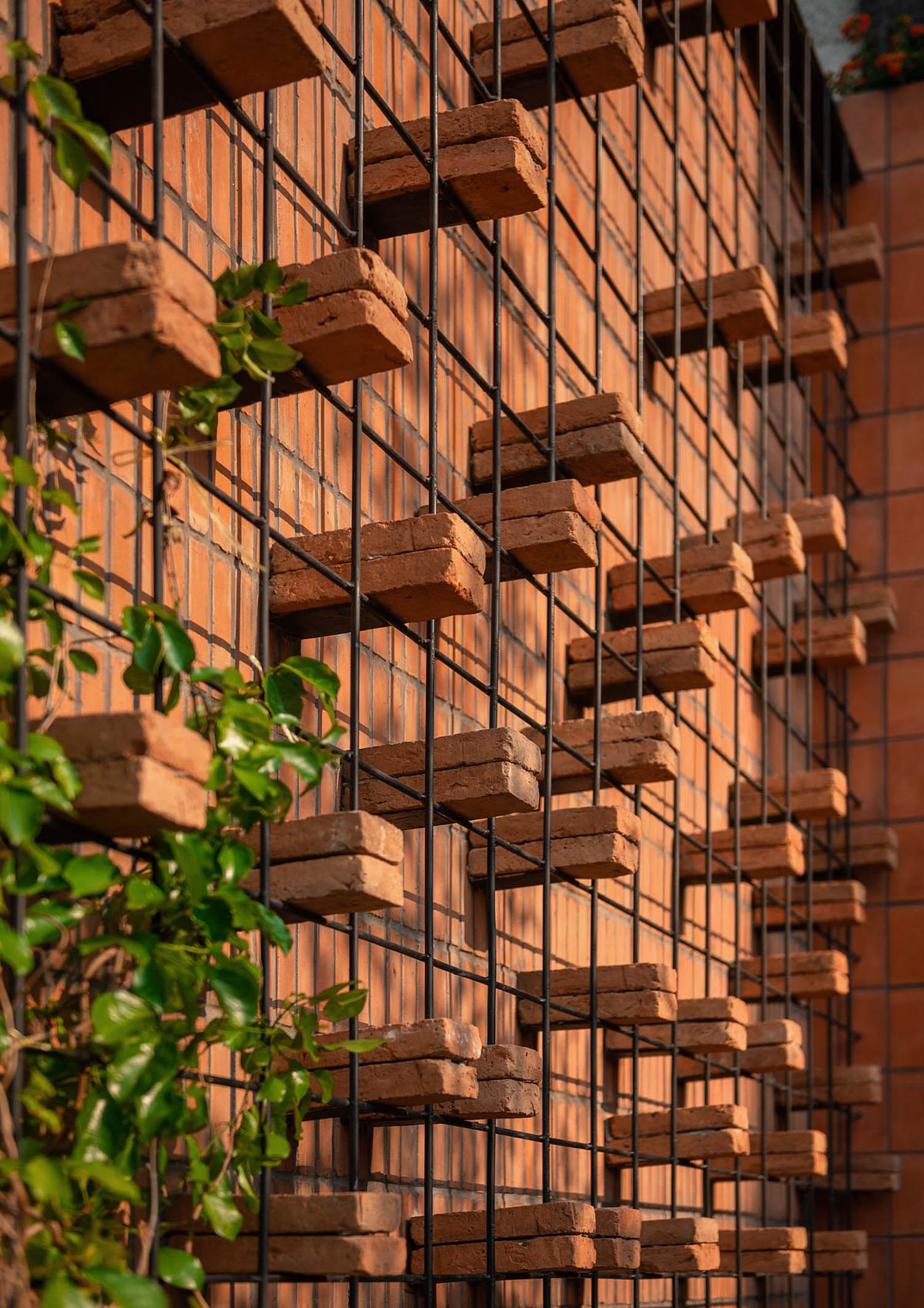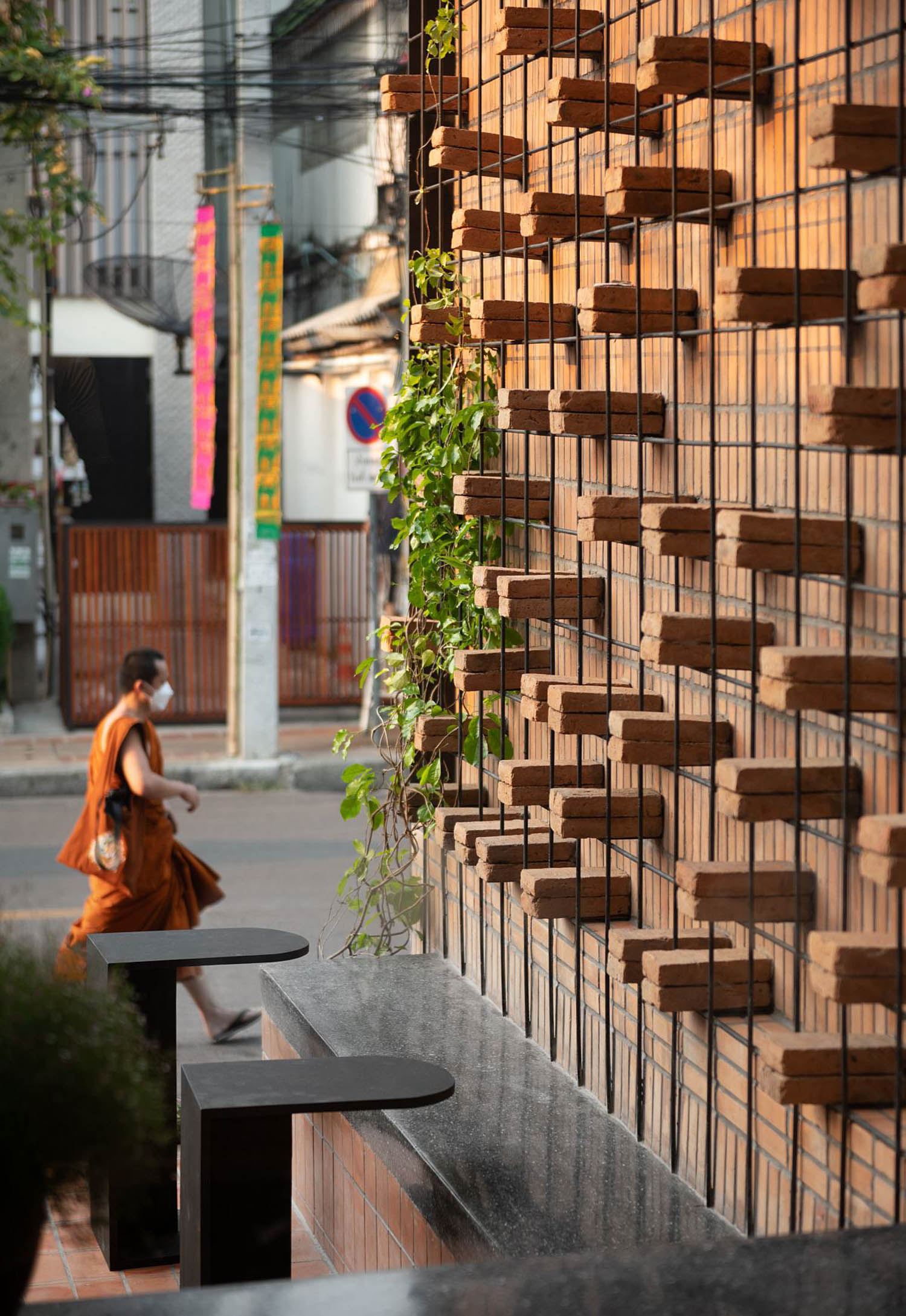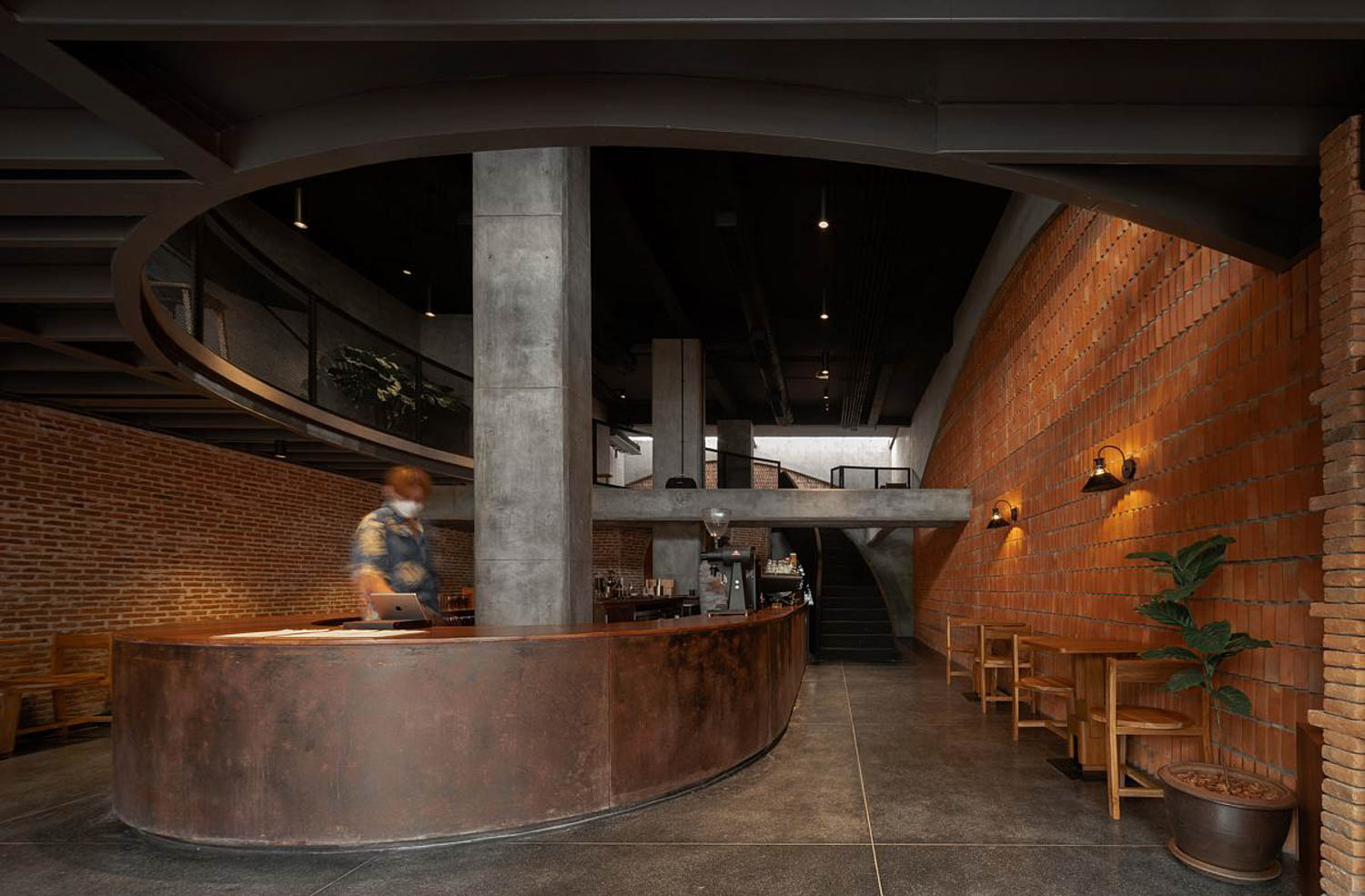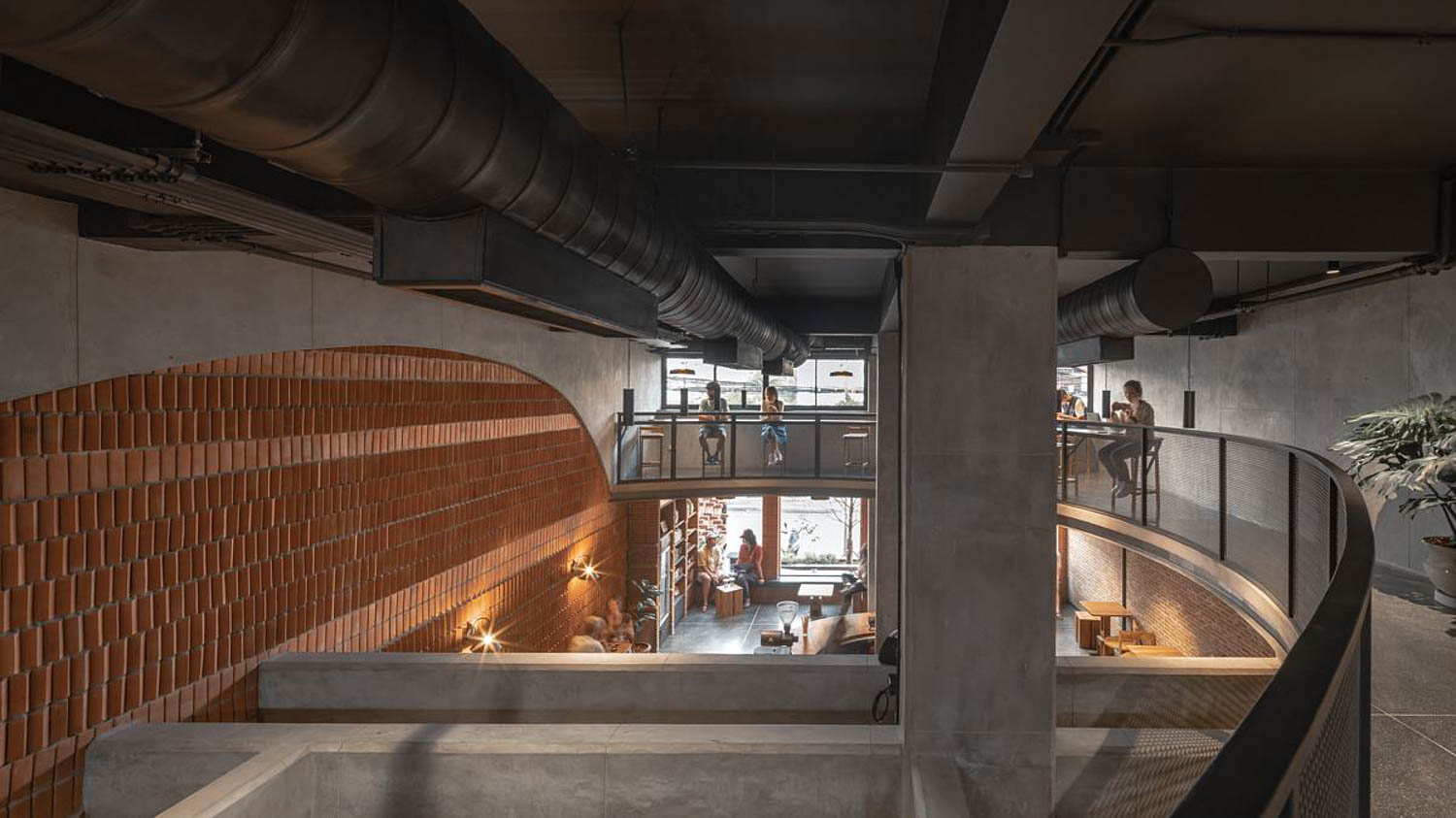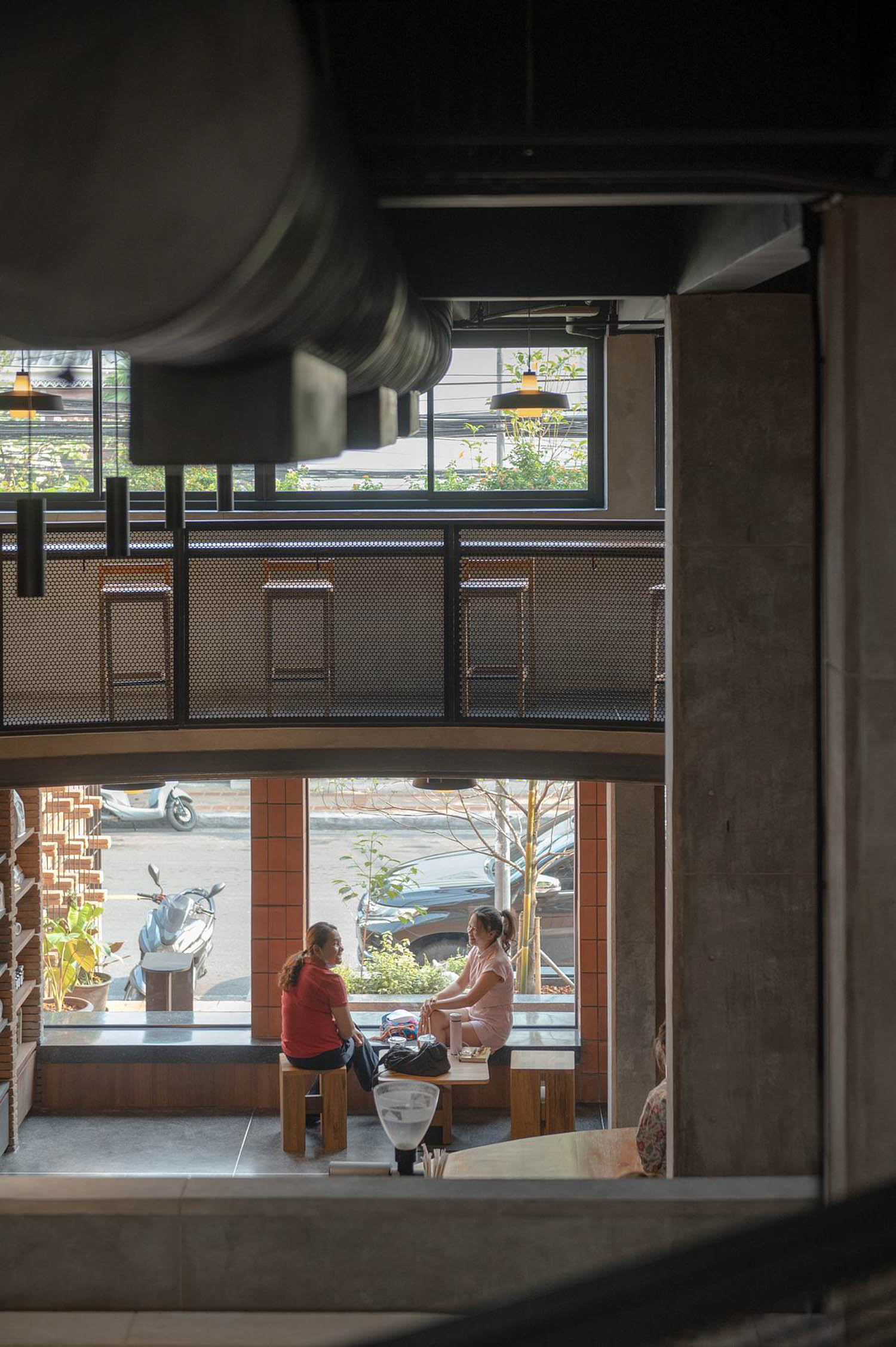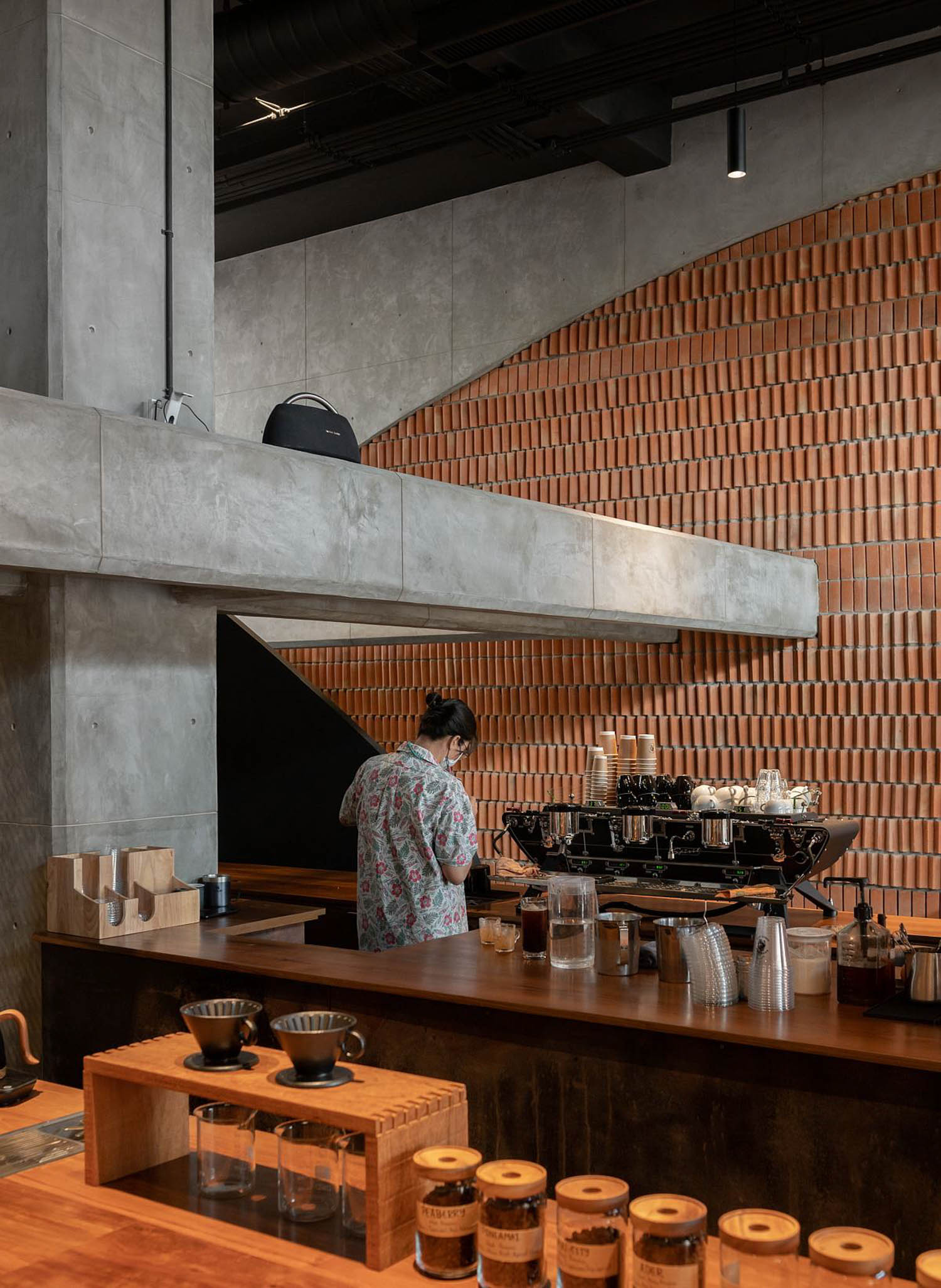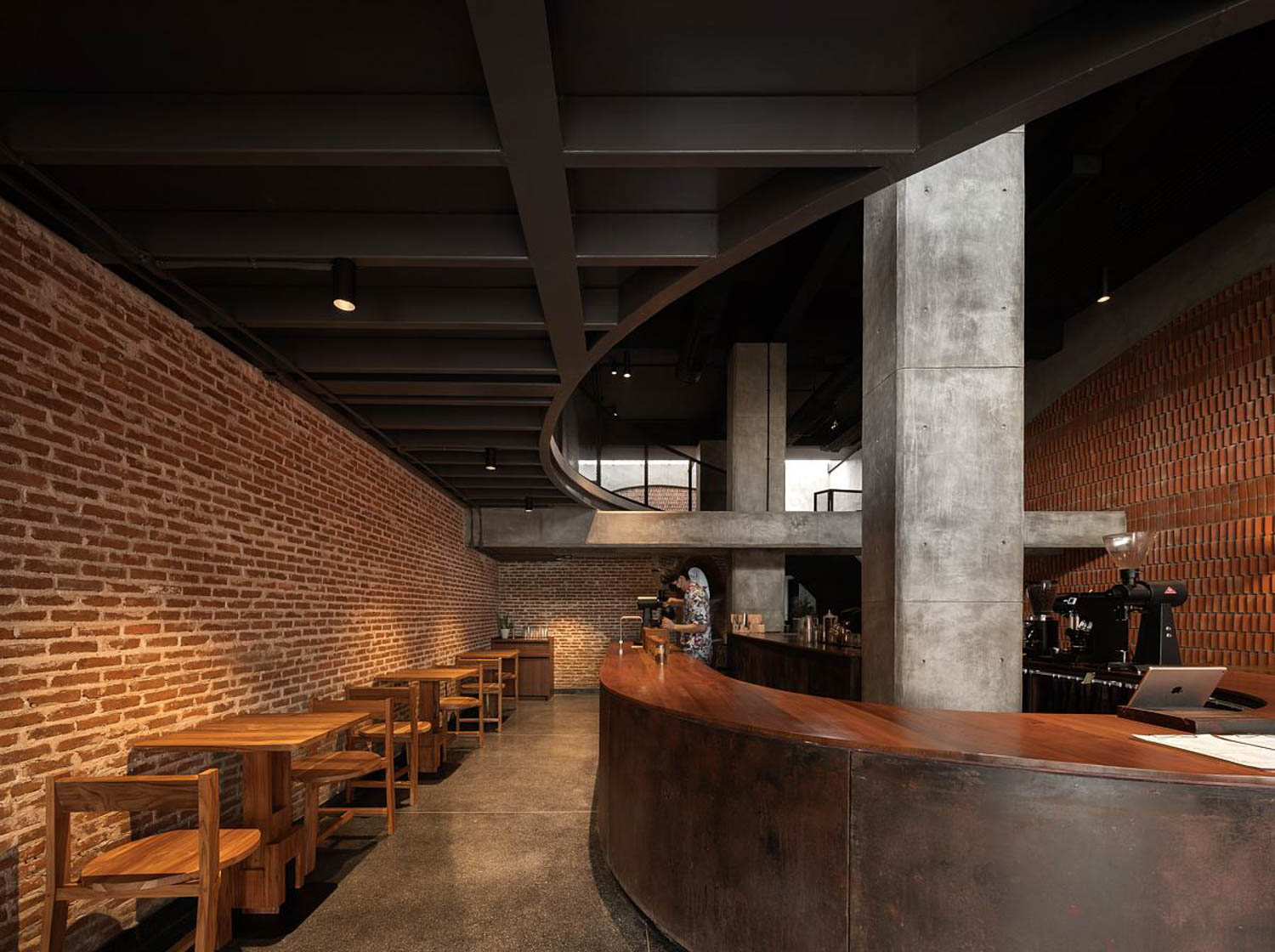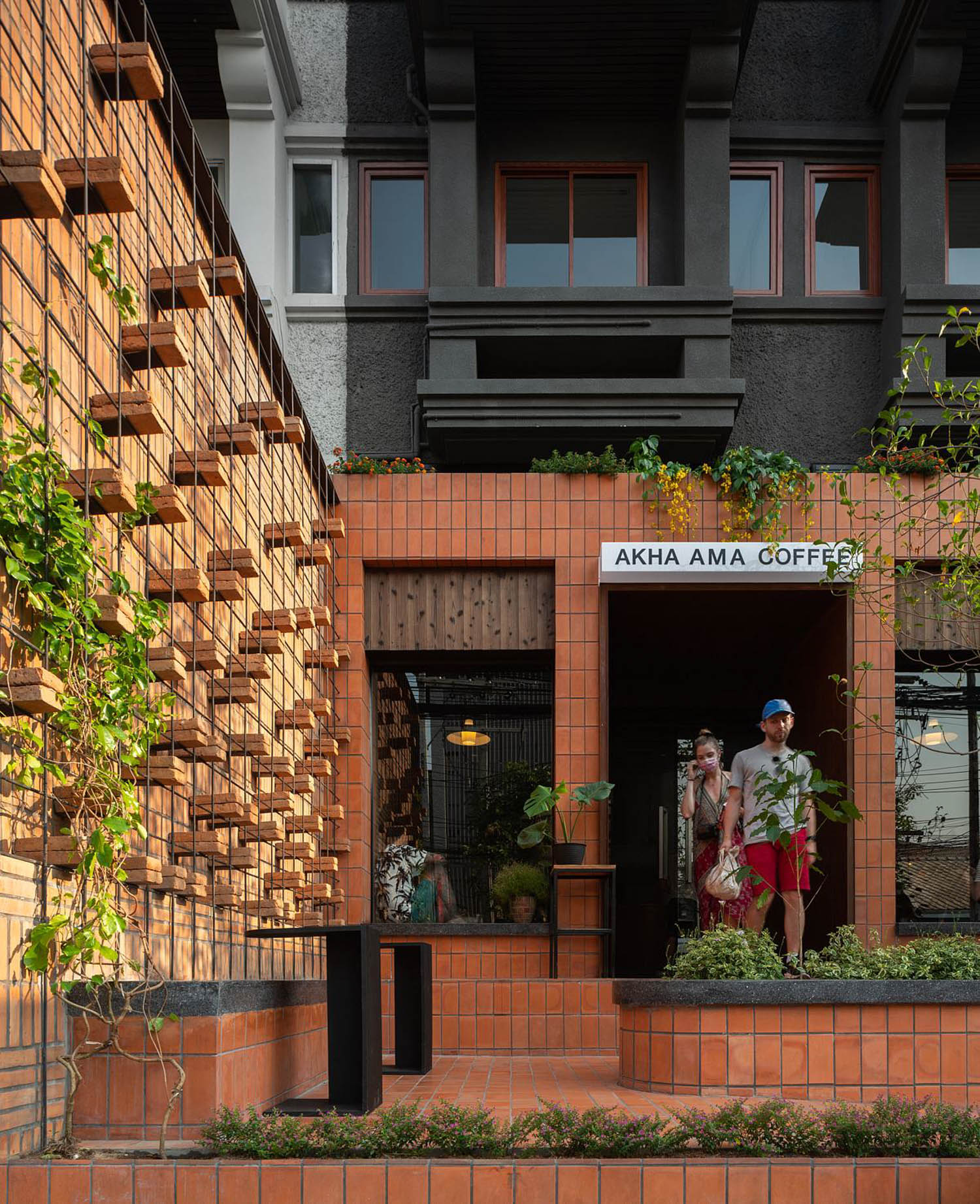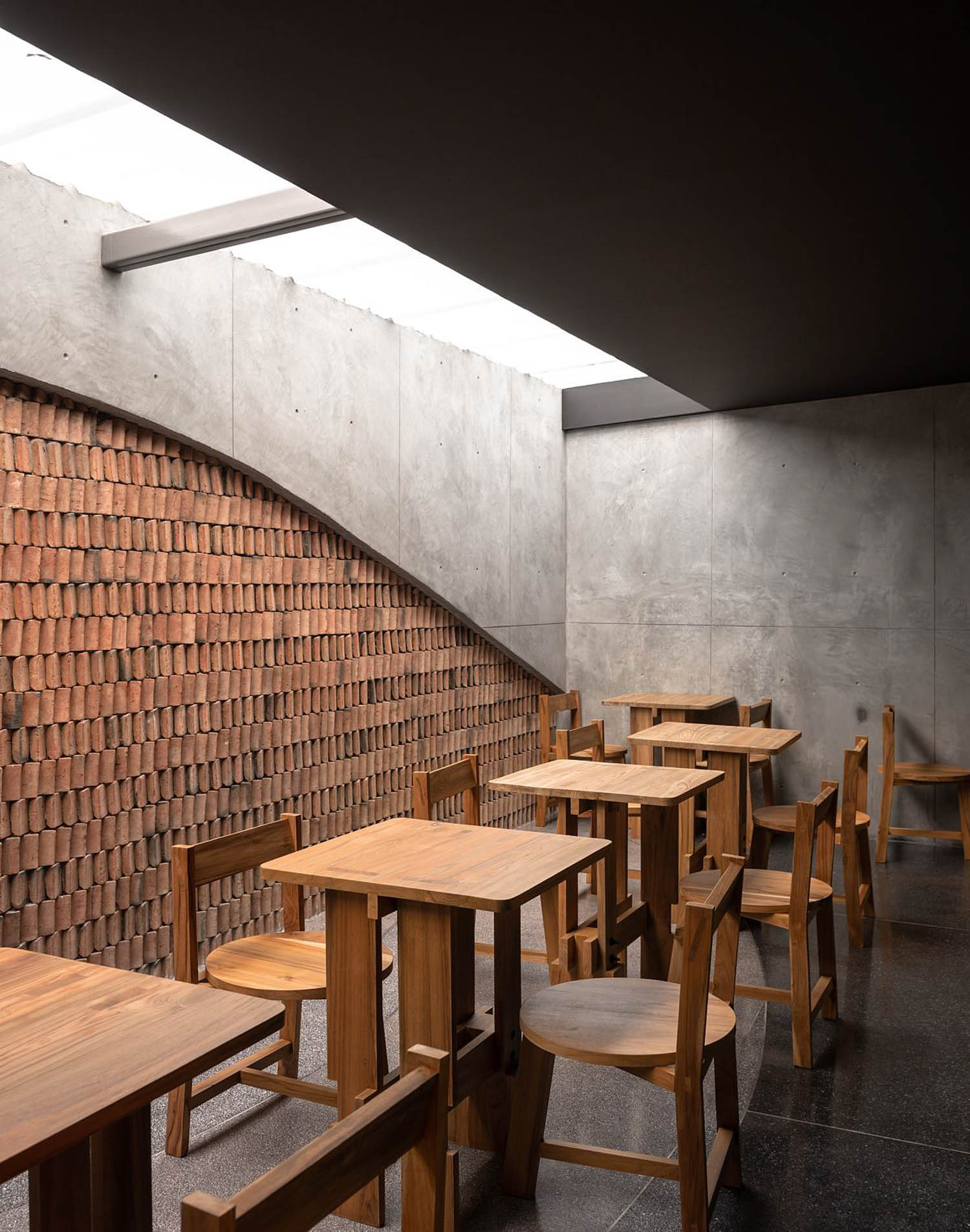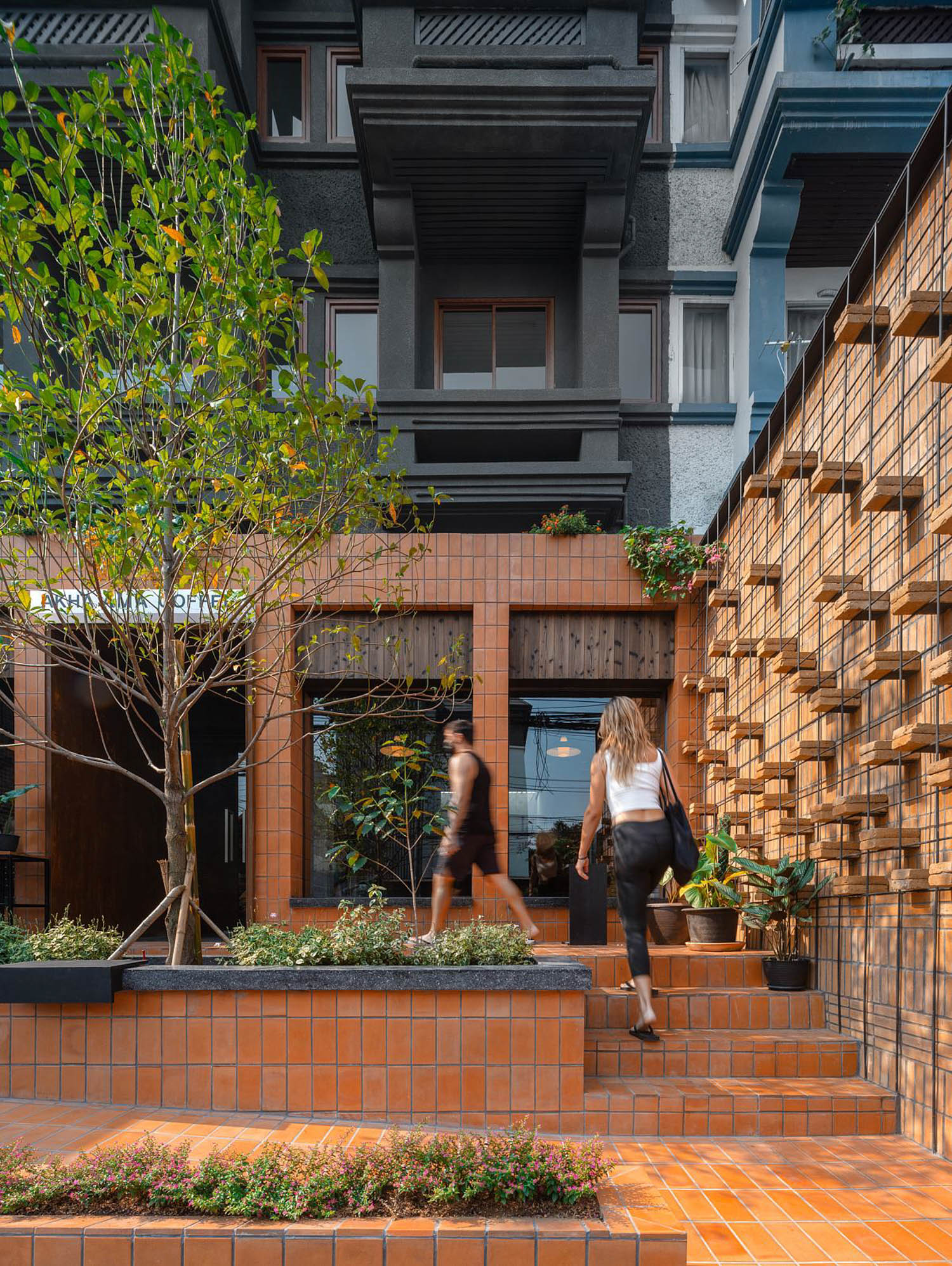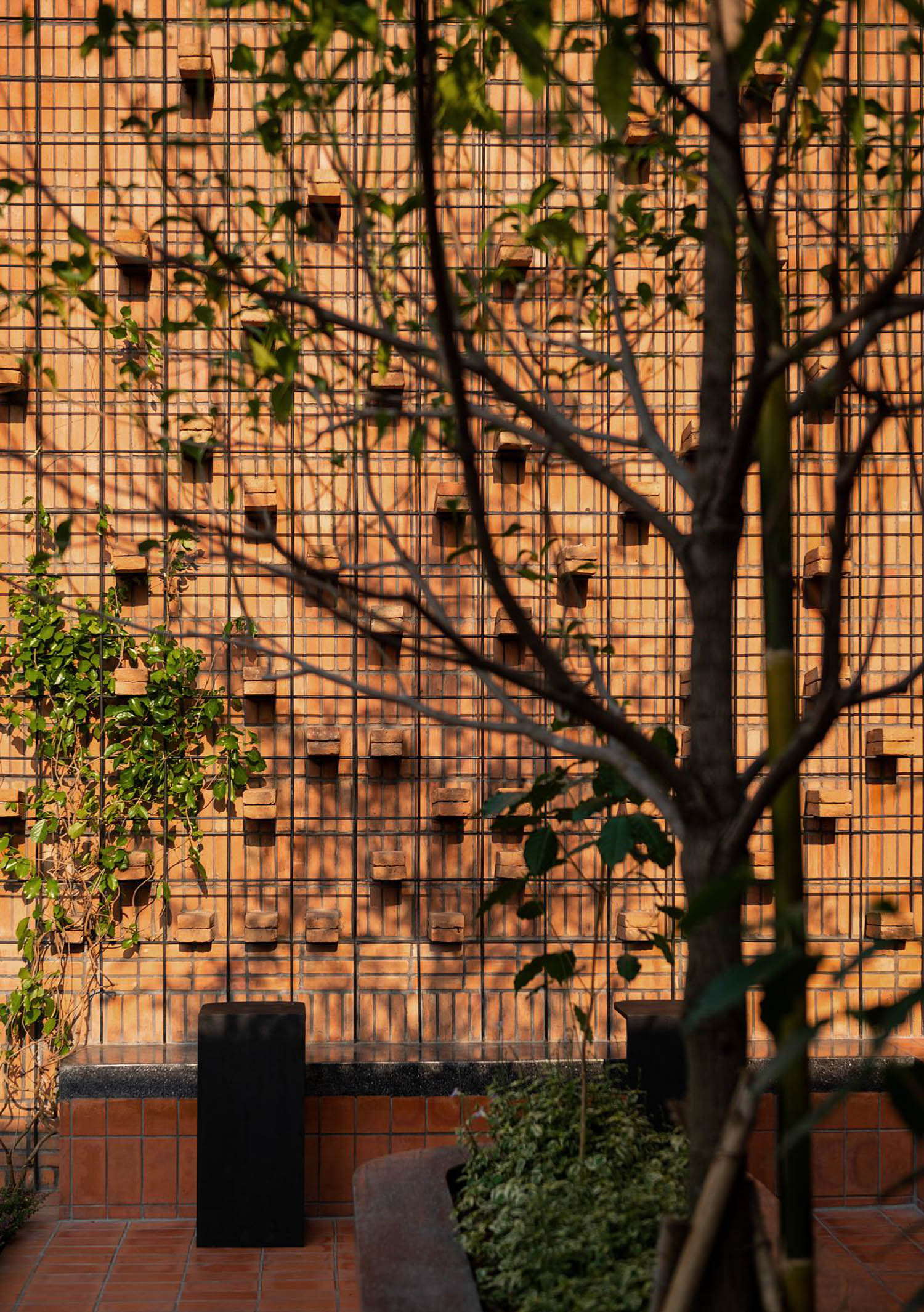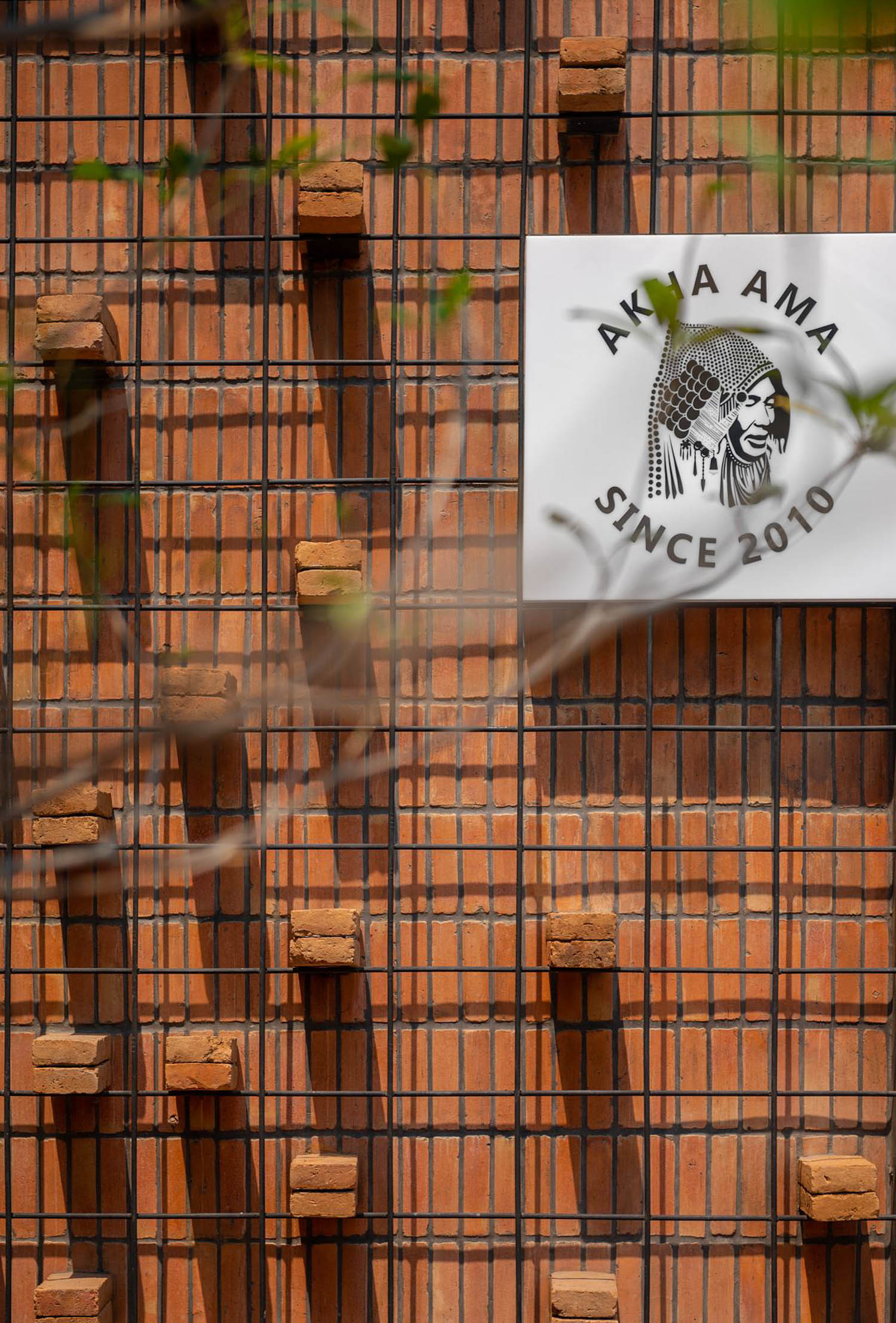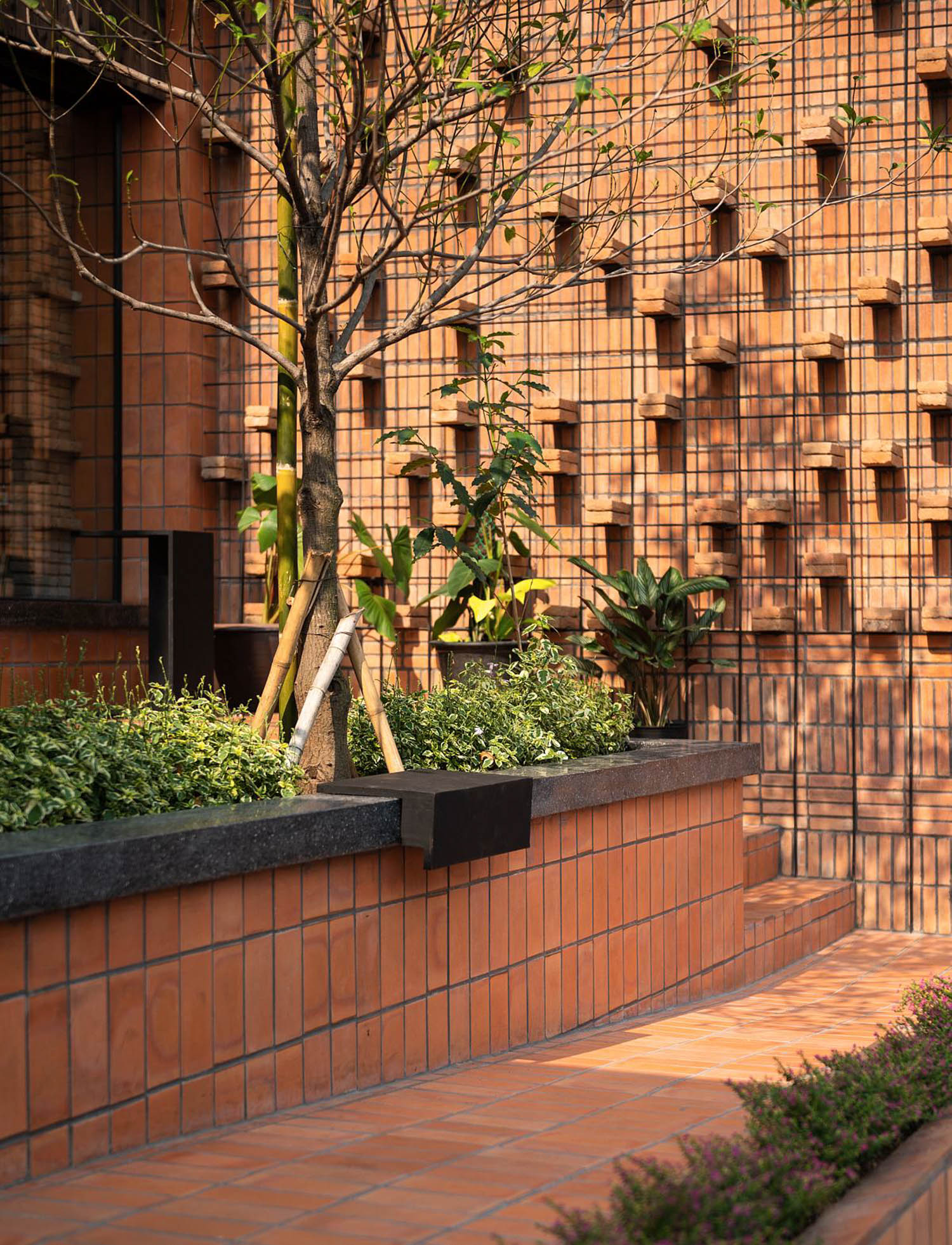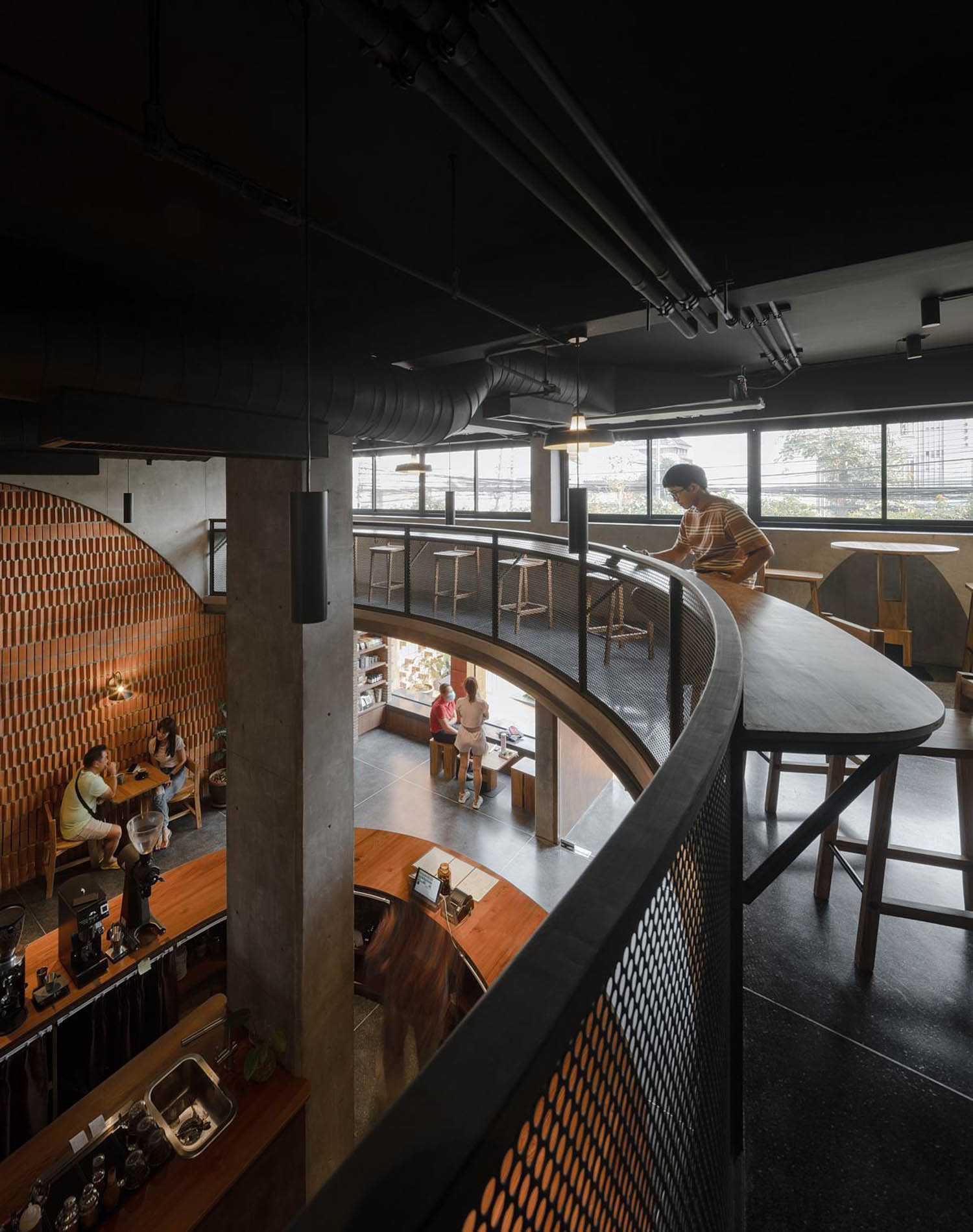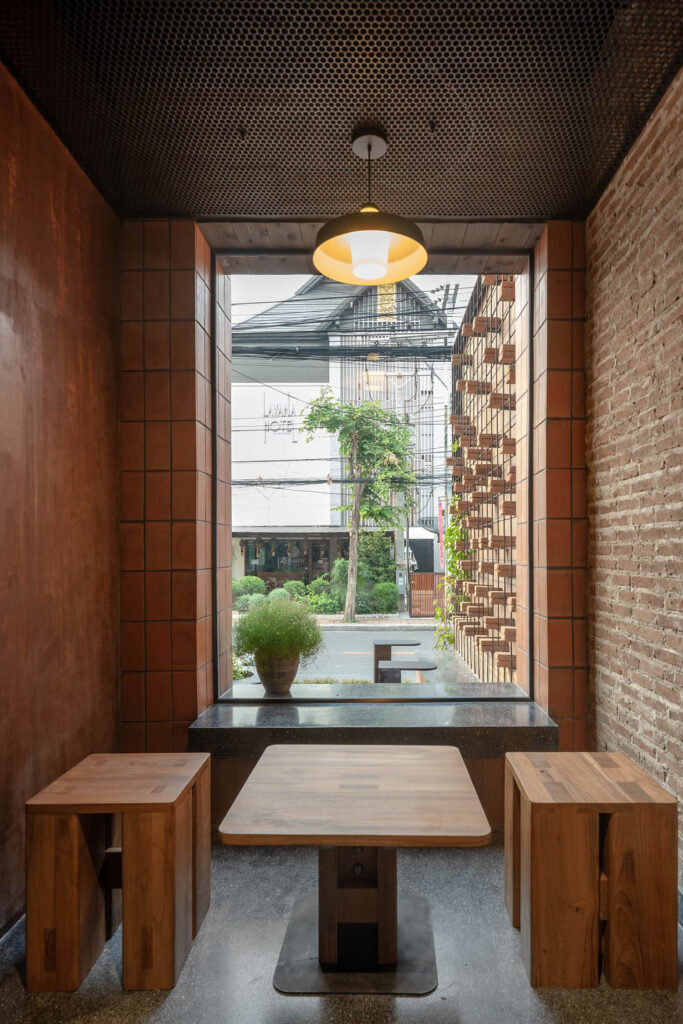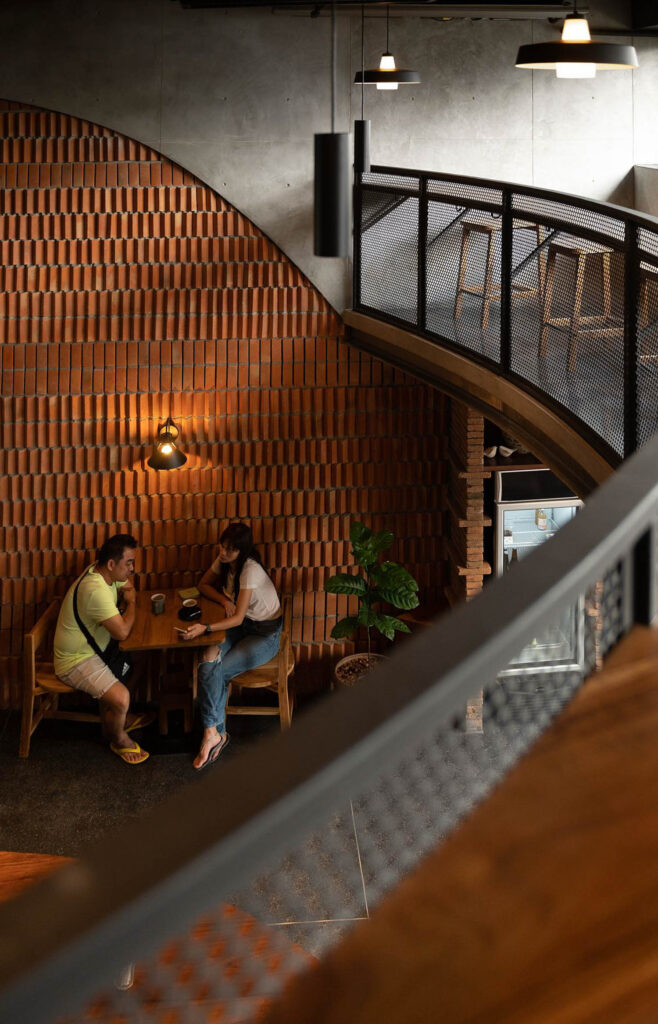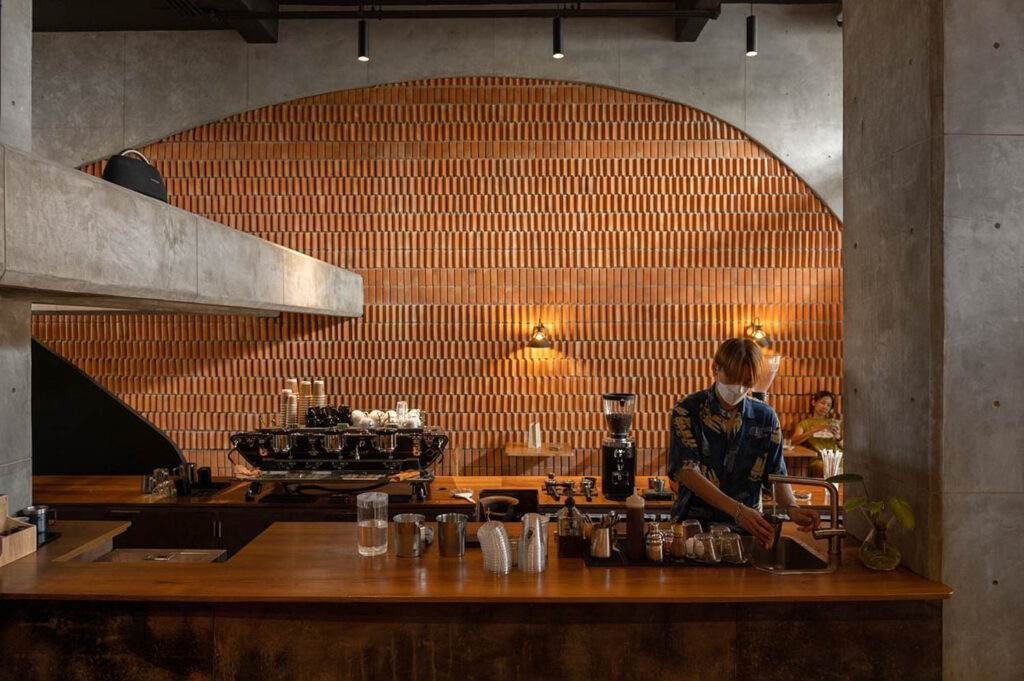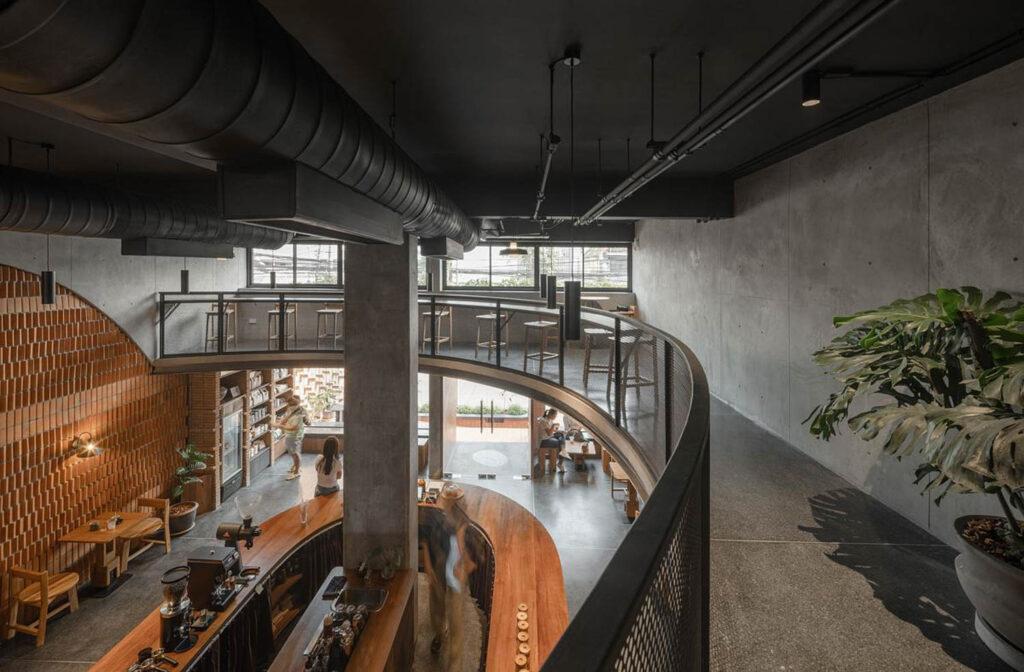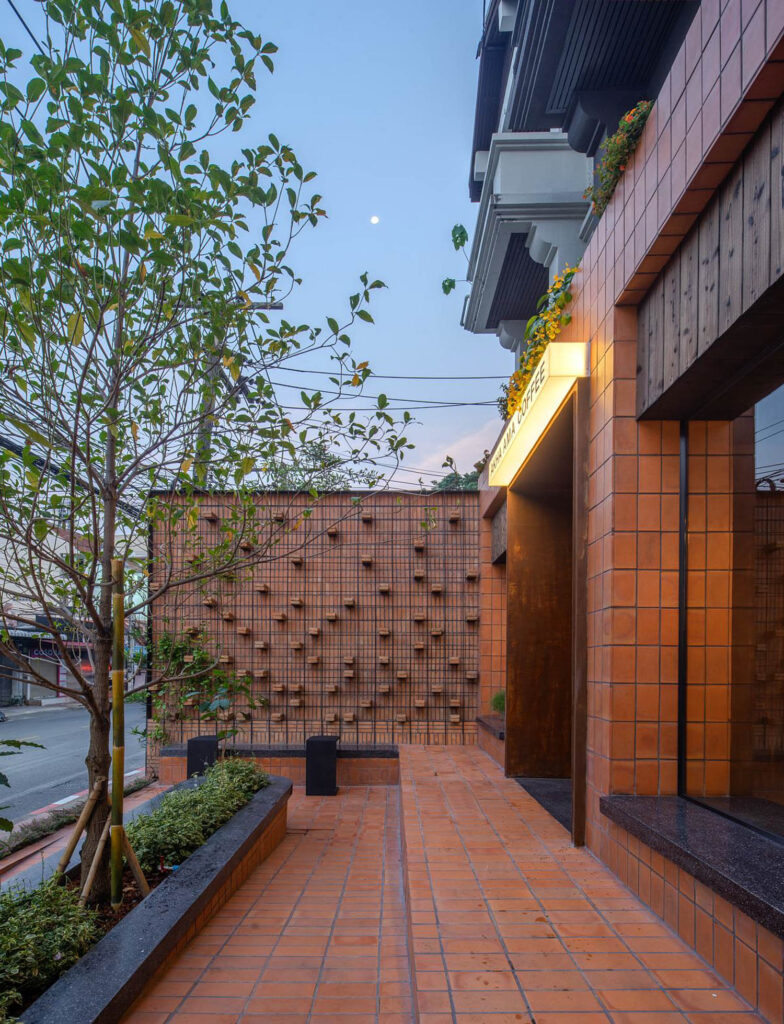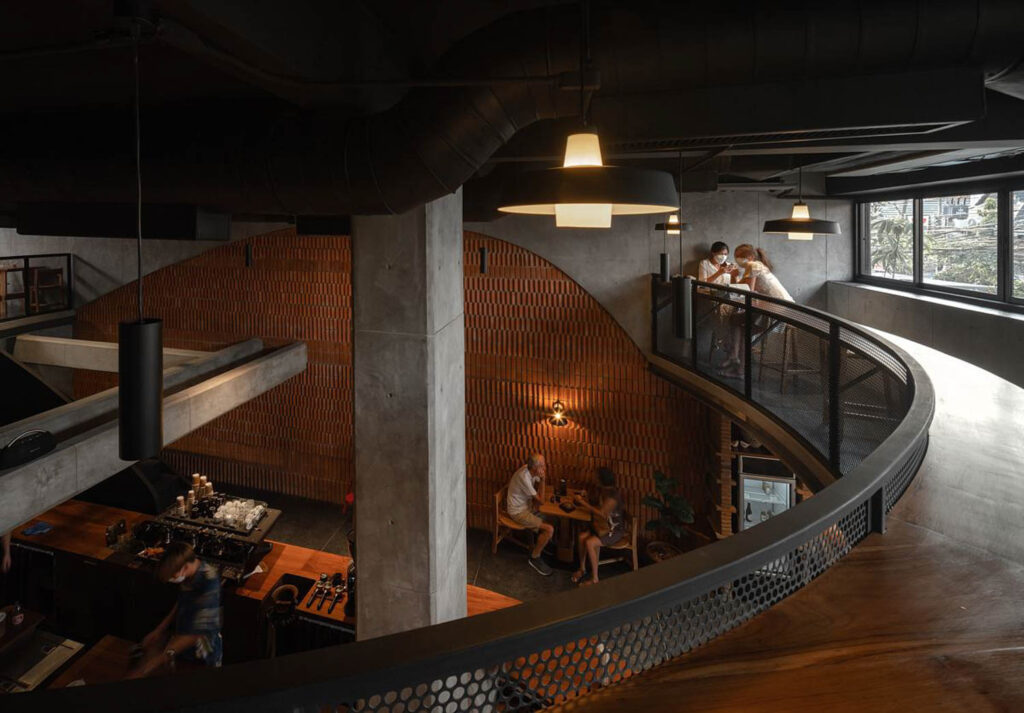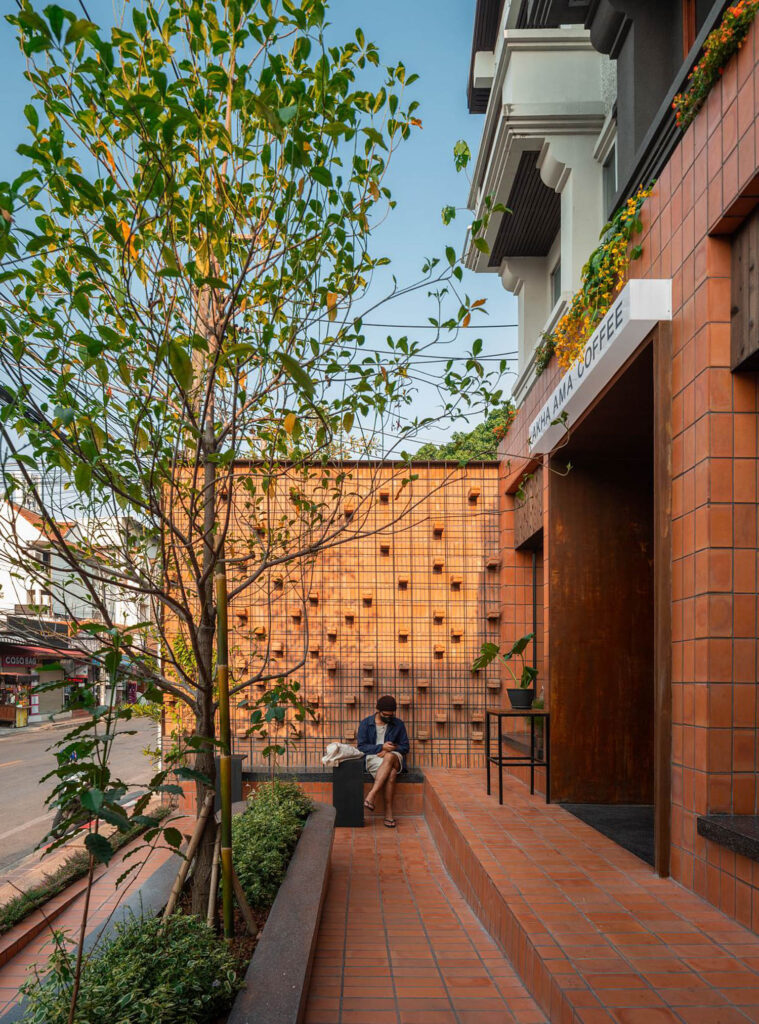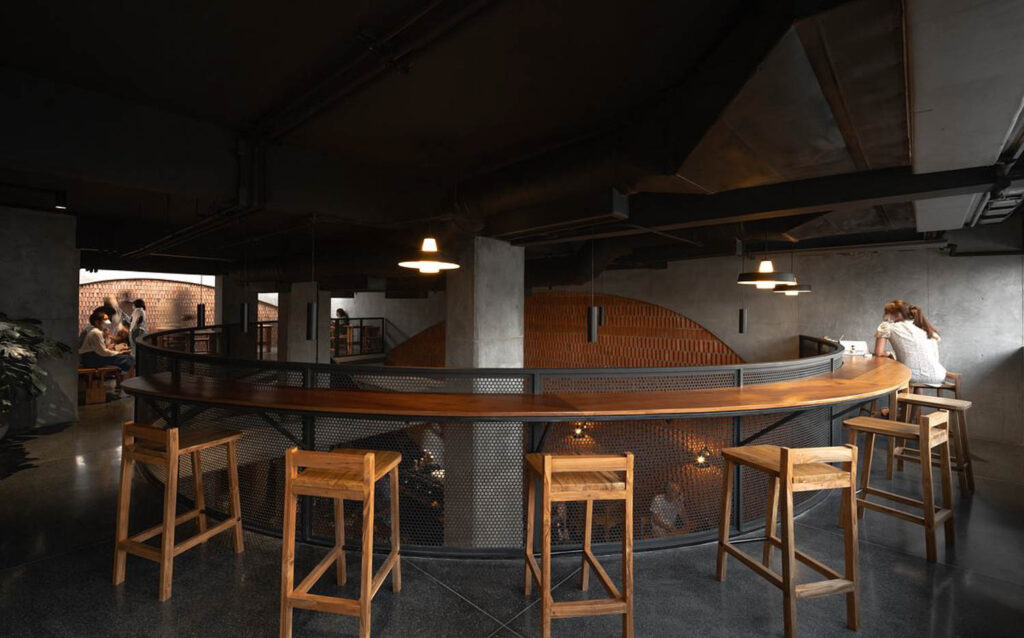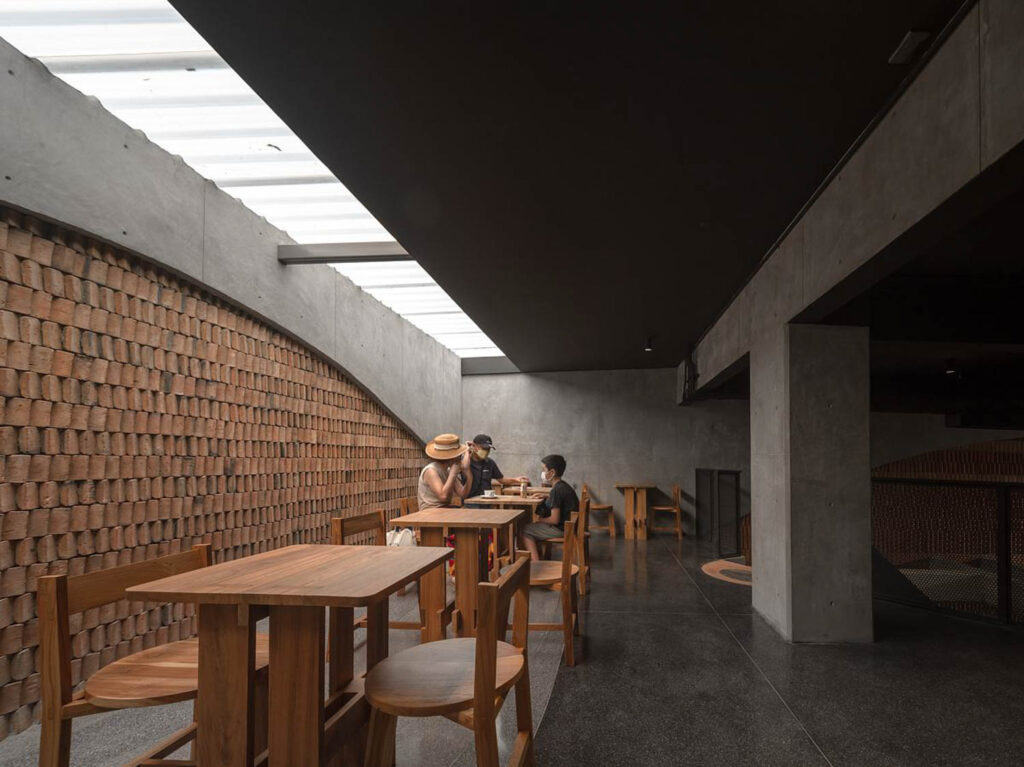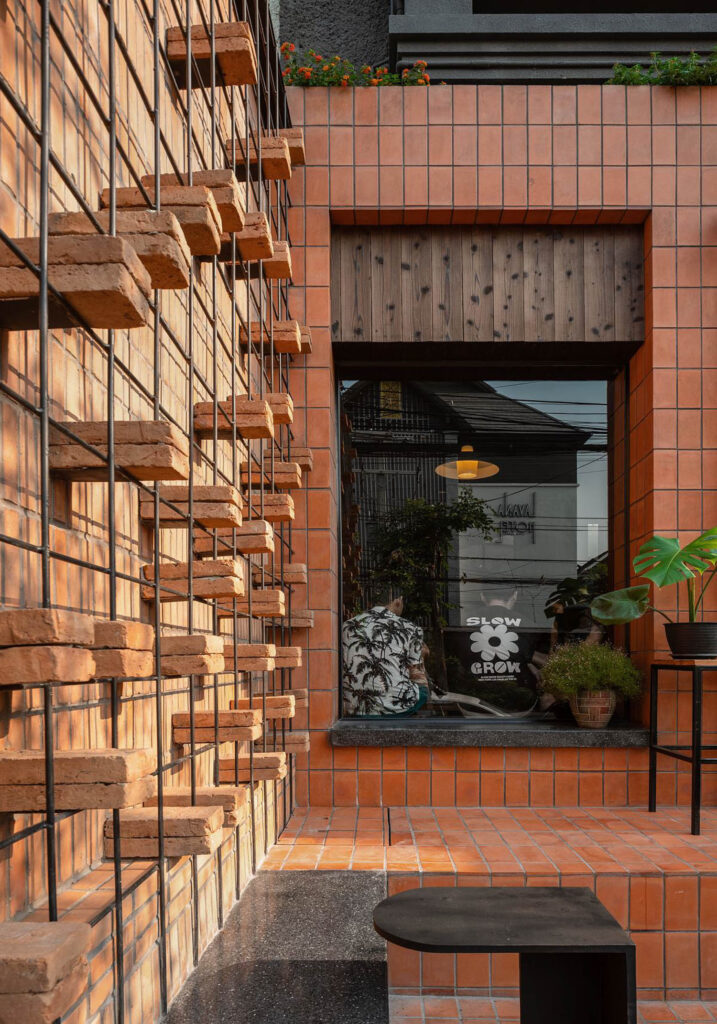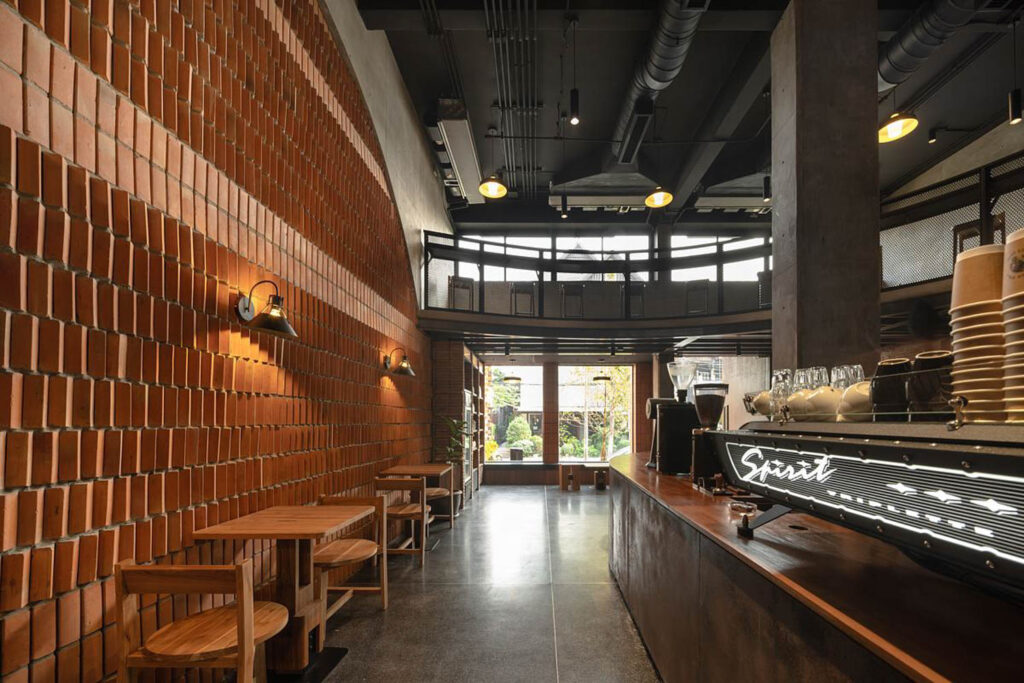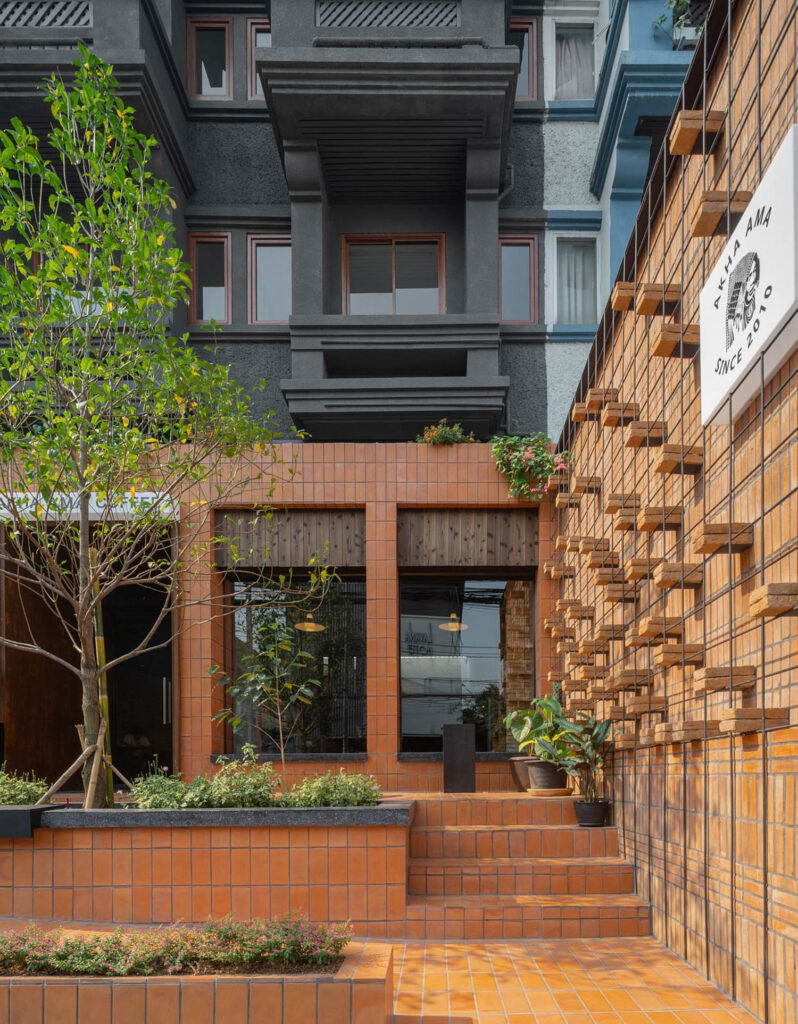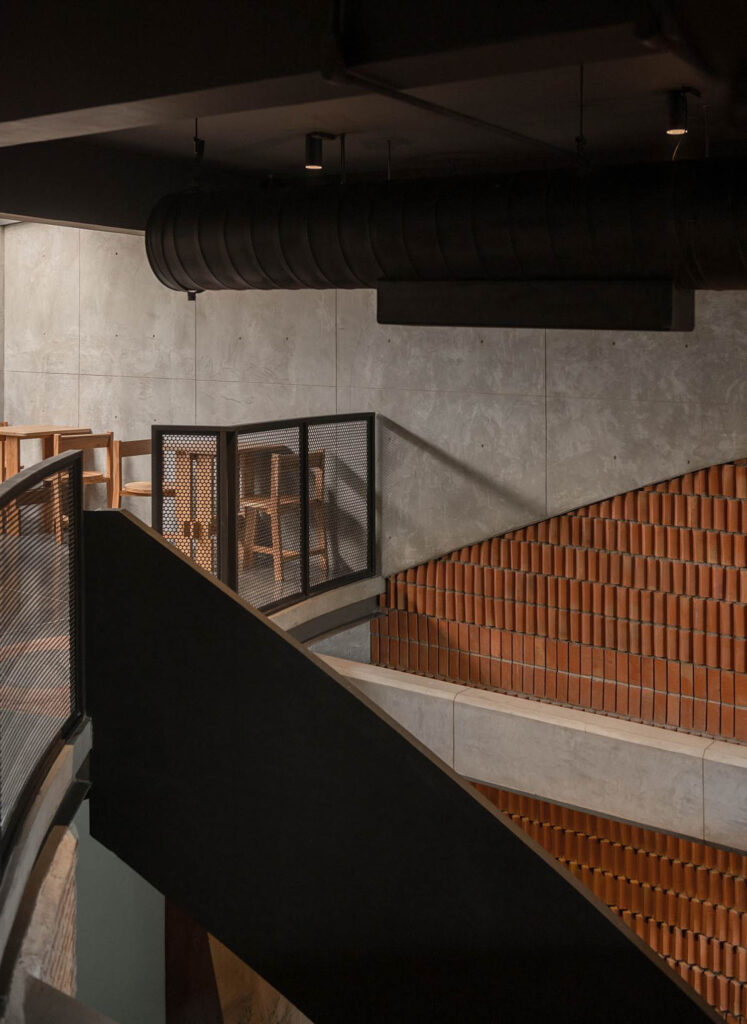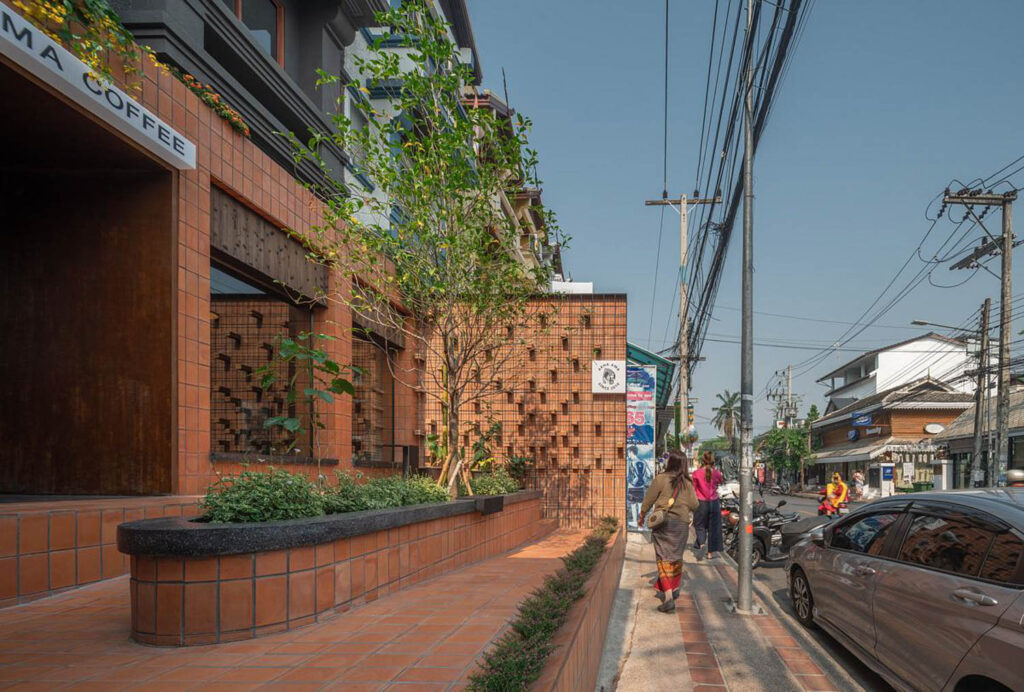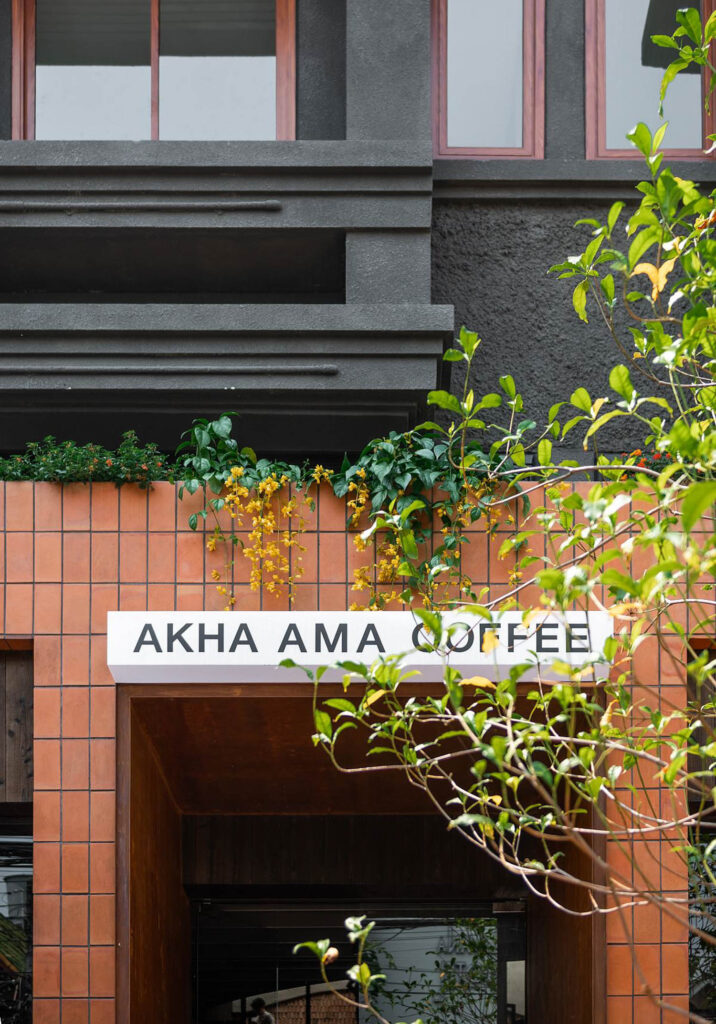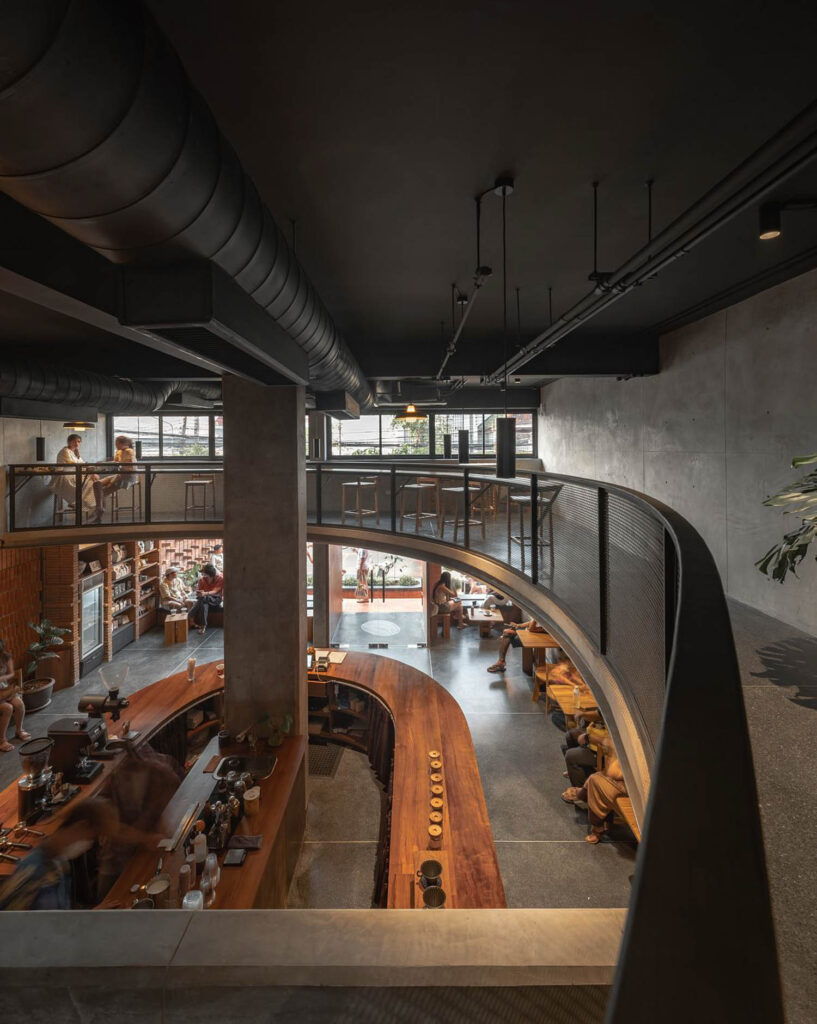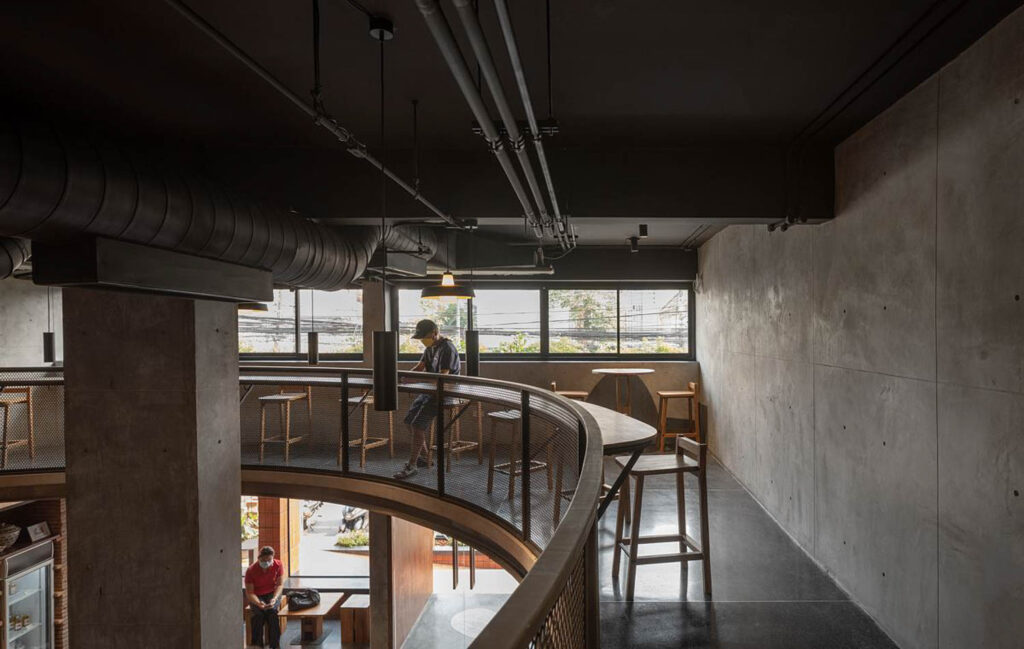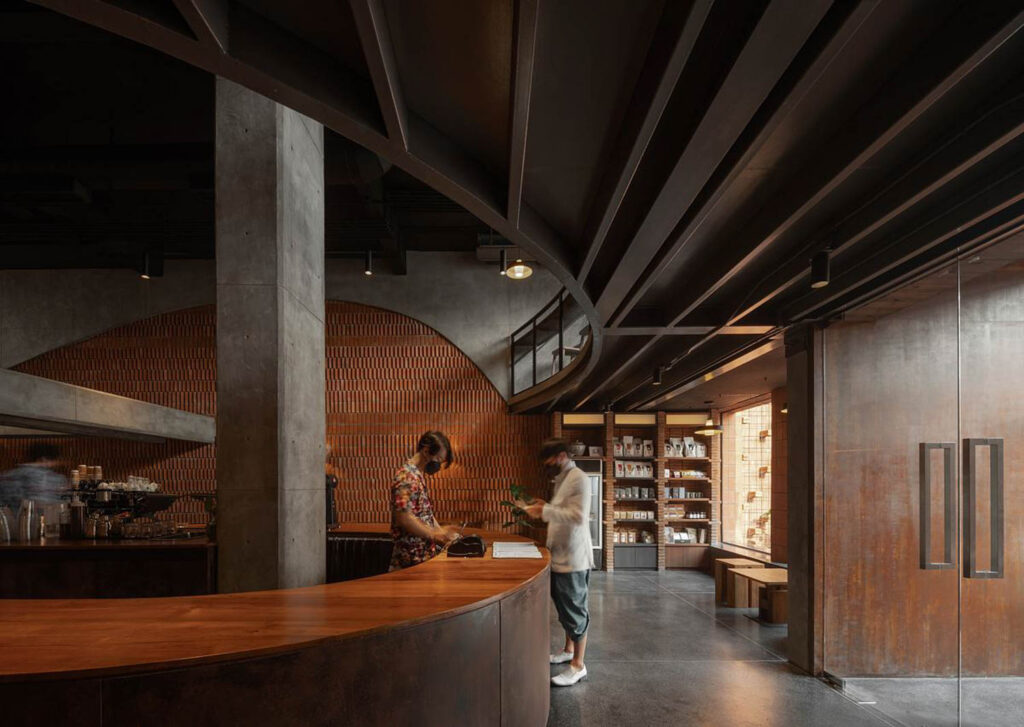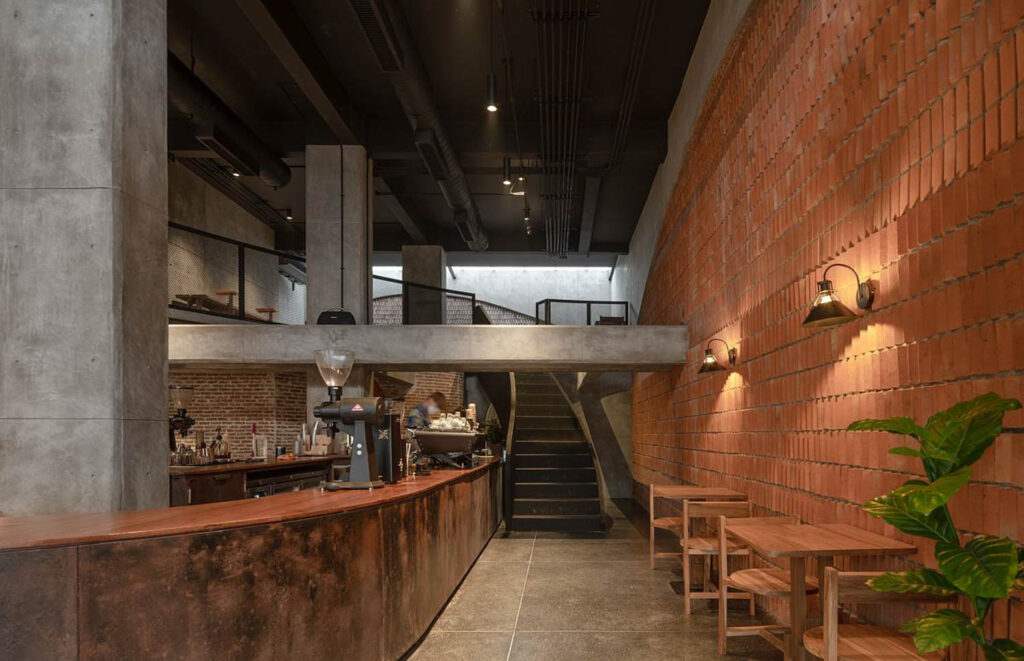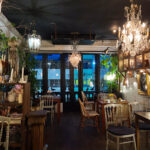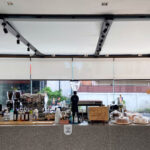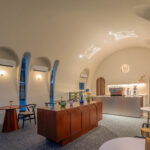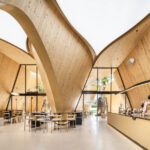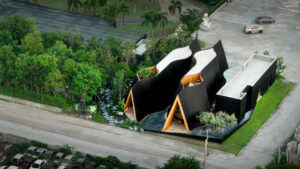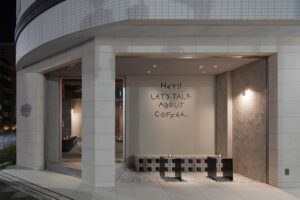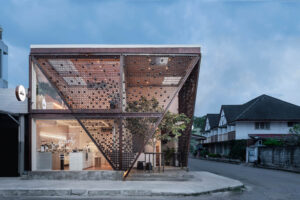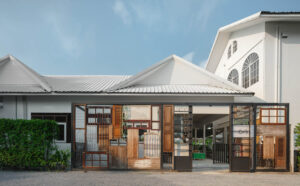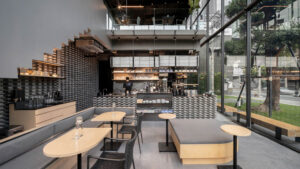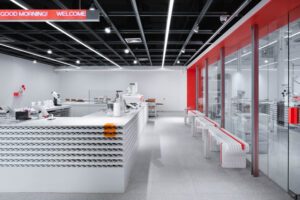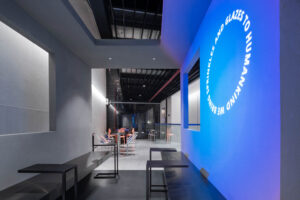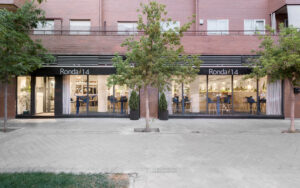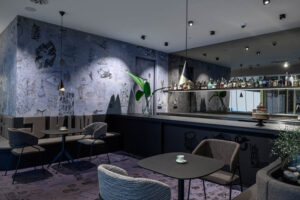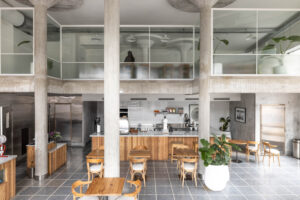Akha Ama Coffee La Fattoria: Blankstudio’s Innovative Café Design in Chiang Mai
Located in the heart of Chiang Mai, Akha Ama Coffee La Fattoria, designed by Blankstudio, is a creative transformation of a typical shophouse into a vibrant café that both respects and redefines its architectural context. The challenge lay in breaking away from the conventional perception of the original structure, which once served as a townhouse and bank, to create a modern and dynamic environment.
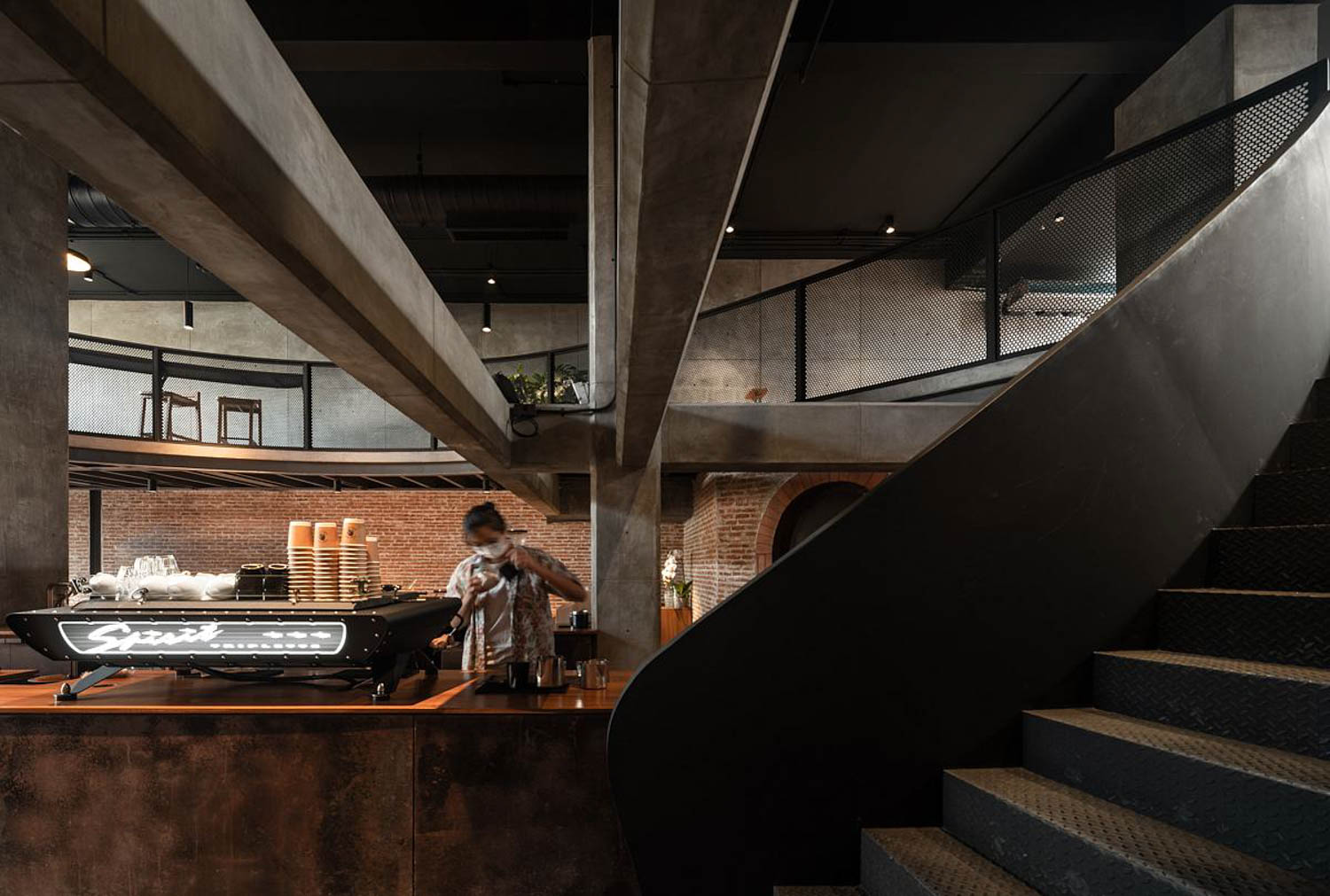
Blankstudio overcame these challenges by integrating a curved mezzanine floor that adds visual intrigue and vertical connectivity, while the use of local clay bricks in a contemporary pattern pays homage to Chiang Mai’s historic cityscape. Central to the design is the placement of the café counter, which energizes the space and enhances customer interaction. Akha Ama Coffee’s design not only serves functional and aesthetic purposes but also thoughtfully balances the preservation of Chiang Mai’s architectural heritage with the needs of a modern café.
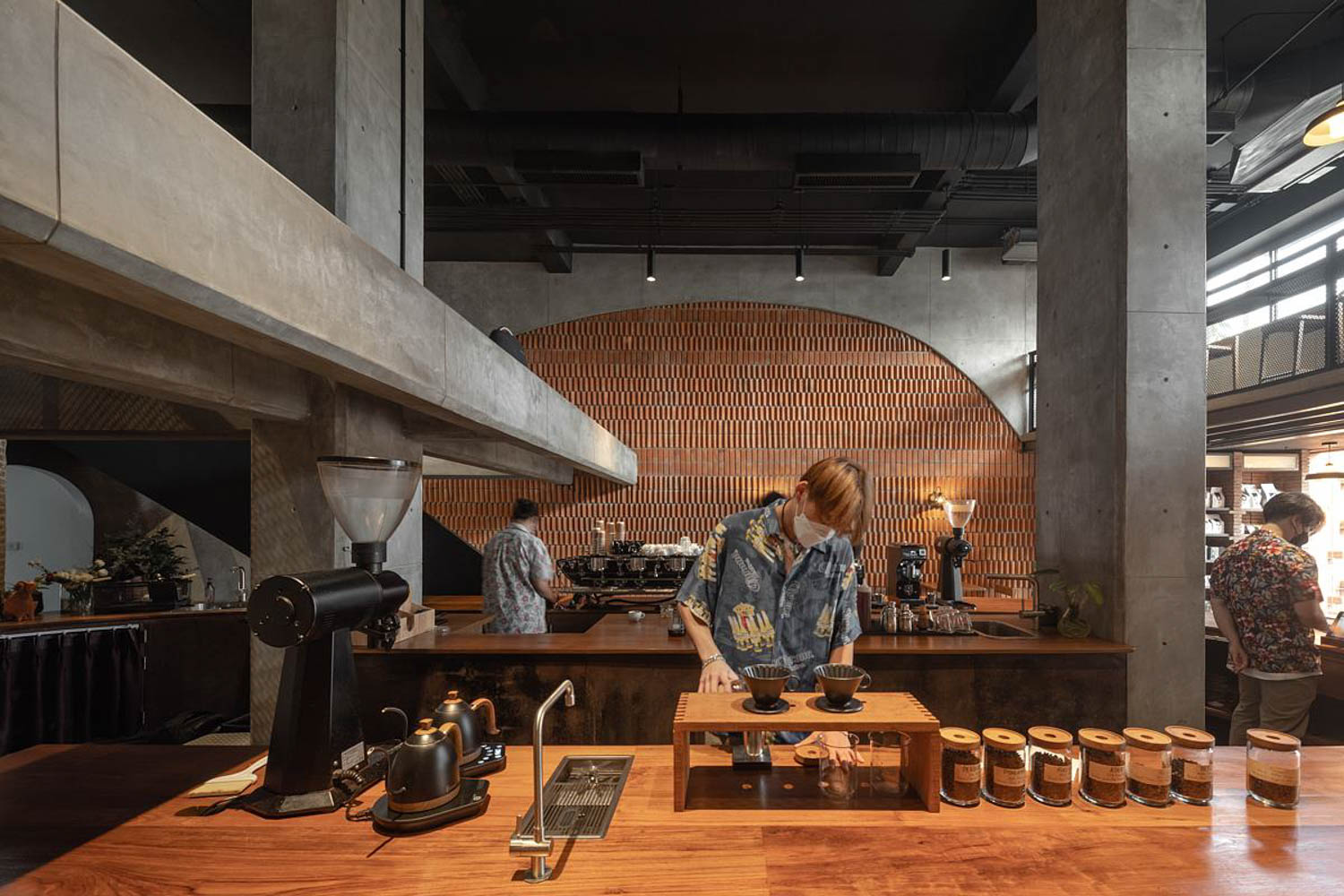
Photography by Panoramic Studio, Published with bowerbird
To explore cafes worldwide see bestcafedesigns.com. A top 100 architectural blog and global directory of cafes and cafe professionals. For more Thailand or asian cafe designs, read more here.
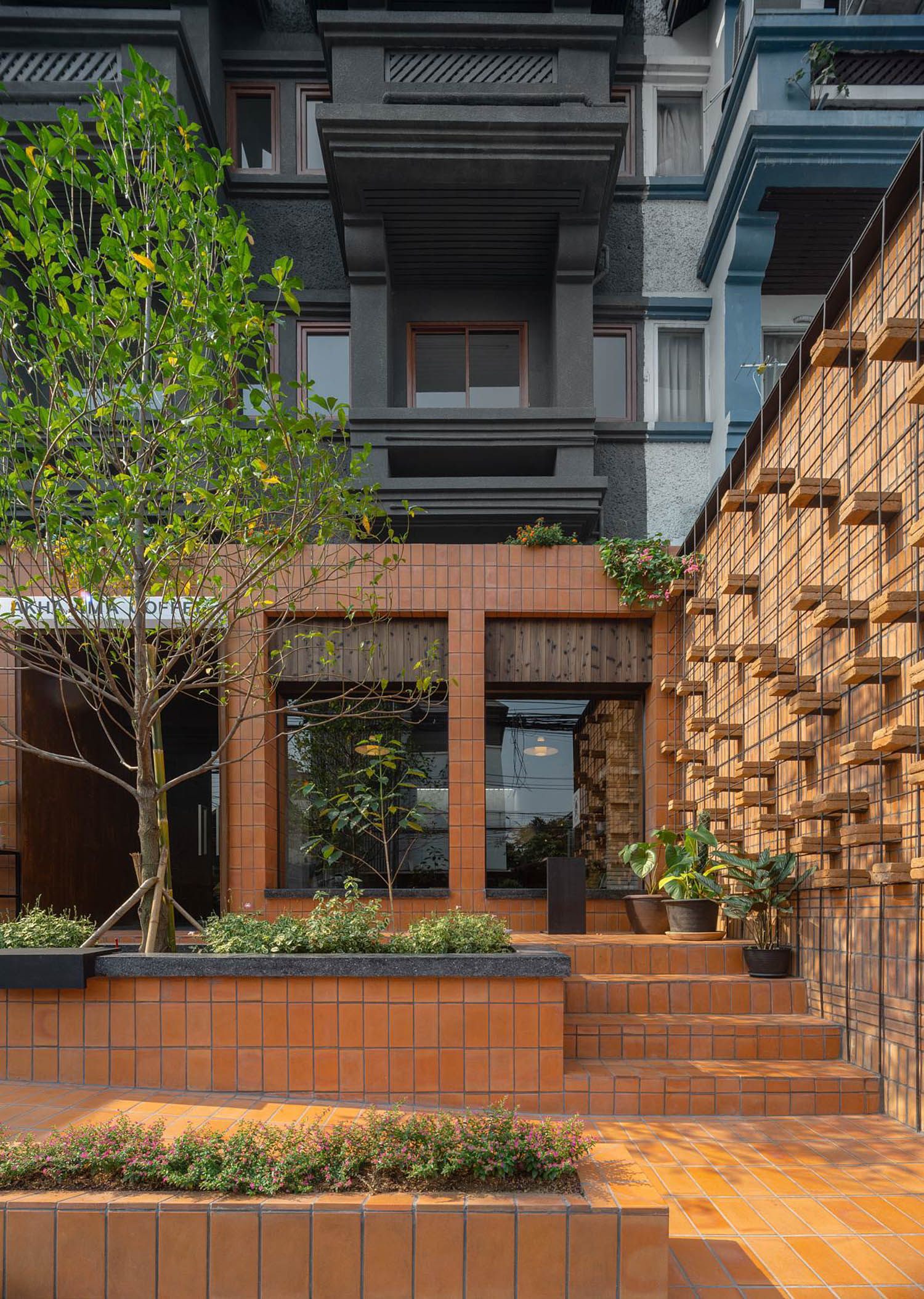
What were the major architectural challenges you faced in transforming the building into Akha Ama Coffee, and how did you overcome them?
The original structure of the building was that of a typical shophouse, which posed significant challenges in creating a space that deviates from the conventional perception of such buildings. To address this, we designed the mezzanine floor with a curved form, which not only establishes a vertical connection between different levels but also adds visual interest to the interior space, making it more dynamic and engaging.
How did the building’s history as a townhouse and bank influence your decisions regarding the interior and exterior design of the café?
The building’s previous functions as a townhouse and bank had little influence on our design decisions, as the new function of the space is entirely different. This allowed us to freely create spaces that align with the functional requirements of a modern café, without being constrained by the building’s past uses.
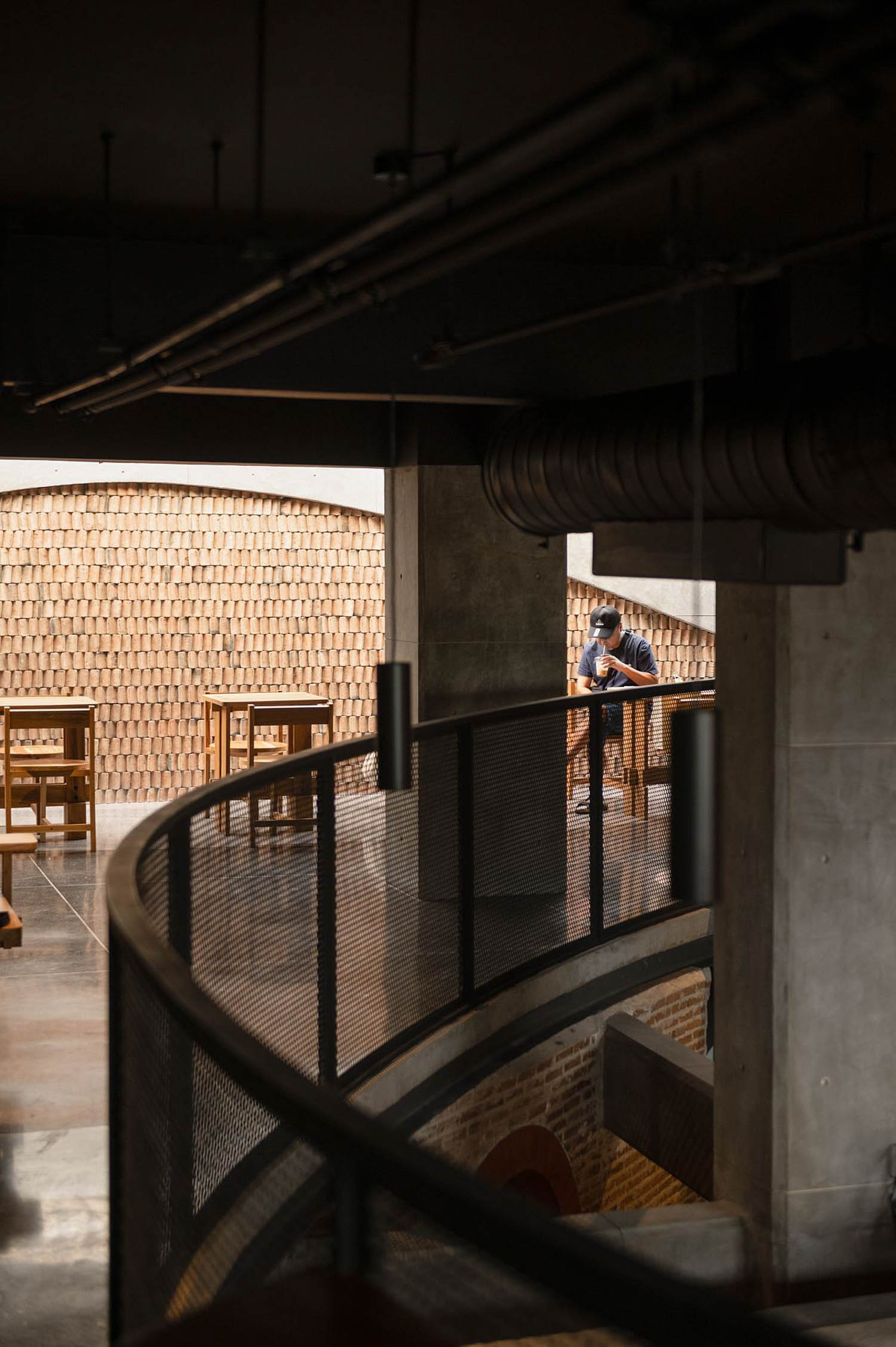
What role did the use of local materials and the distinctive brickwork pattern play in the design of Akha Ama Coffee, and what message were you trying to convey through this choice?
Chiang Mai is a historic city with a strong visual identity, particularly the old city walls made of clay bricks. To honor this context, we incorporated clay bricks into the design, but arranged them in a pattern that diverges from traditional methods. This approach was intended to convey a sense of modernity that still respects and acknowledges the cultural and historical roots of the area.
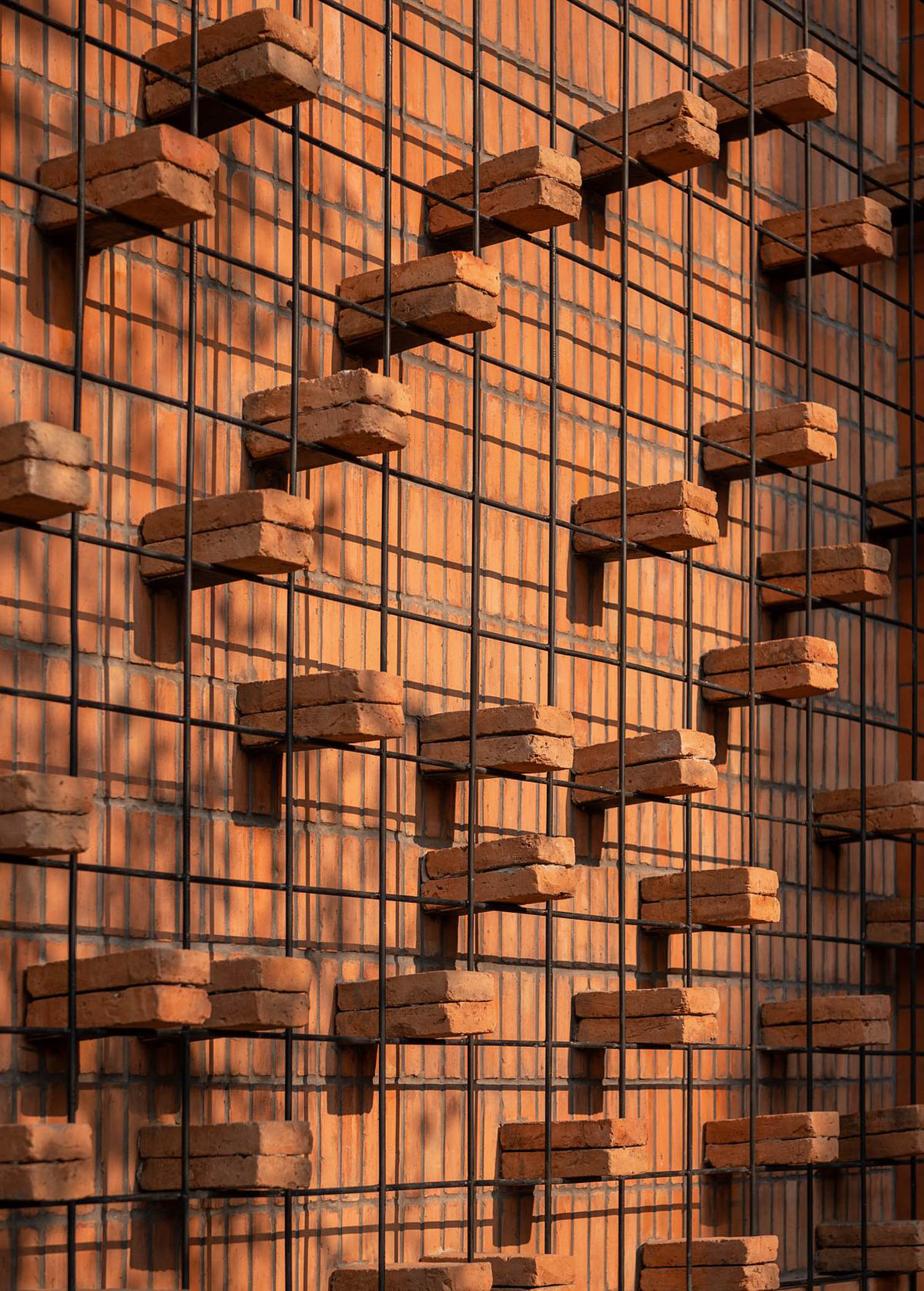
How does placing the counter and workspace in the center of the café enhance the customer experience at Akha Ama Coffee?
Placing the counter at the center of the café allows every area within the space to have a clear view of the baristas at work, which fosters a lively atmosphere and enhances the interaction between customers and staff. This central placement not only energizes the space but also creates a focal point that draws people into the activity of the café.
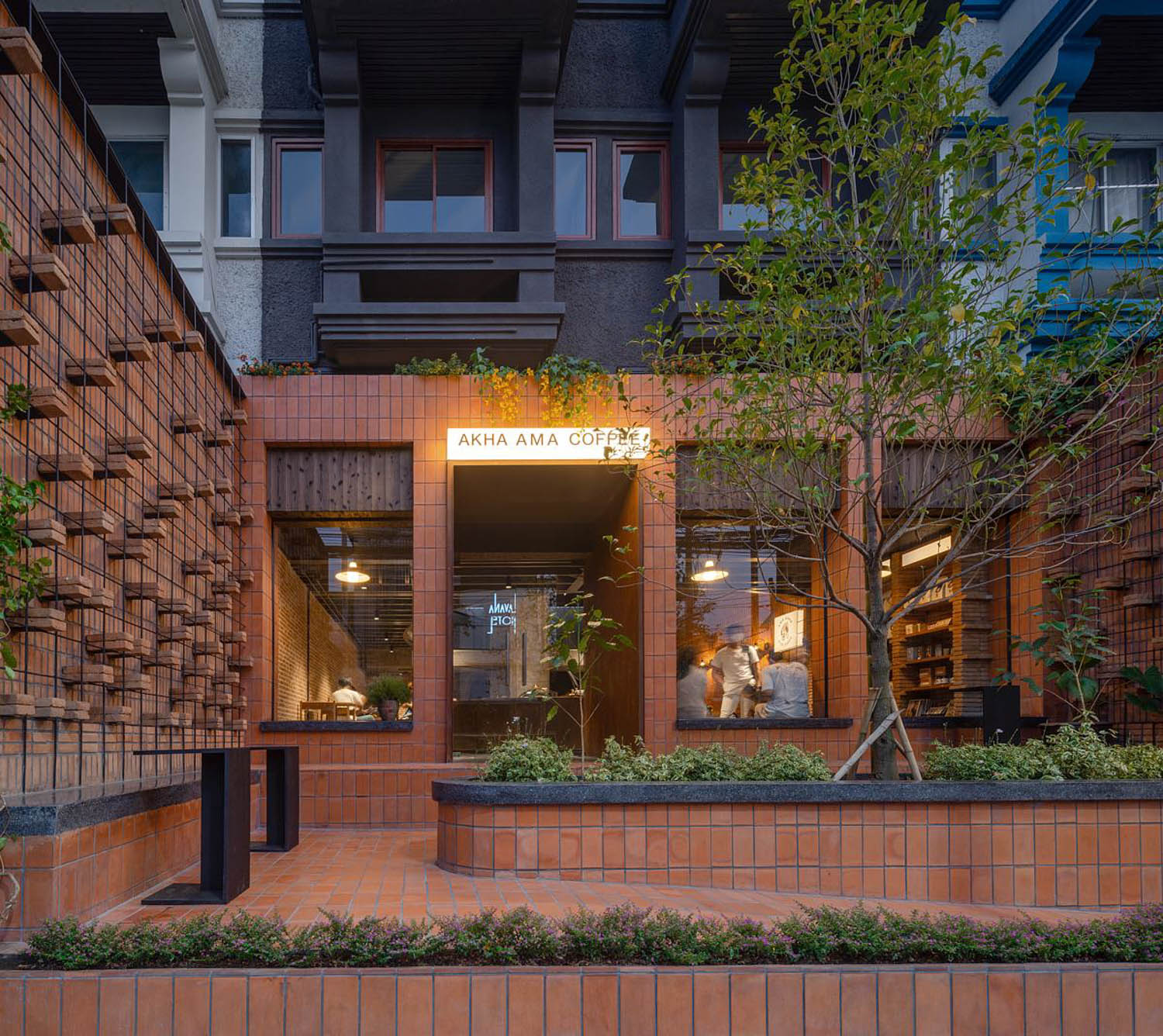
Could you elaborate on the design of the curved mezzanine and how it enhances both the aesthetic and functional aspects of the space?
The curved mezzanine design adds both aesthetic value and functional efficiency to the space. It creates an engaging interior that contrasts with the typically rigid layouts of shophouses. This design allows the mezzanine to be perceived from both the ground floor and the mezzanine level, fostering vertical interaction within the space and making the interior more dynamic and interconnected.
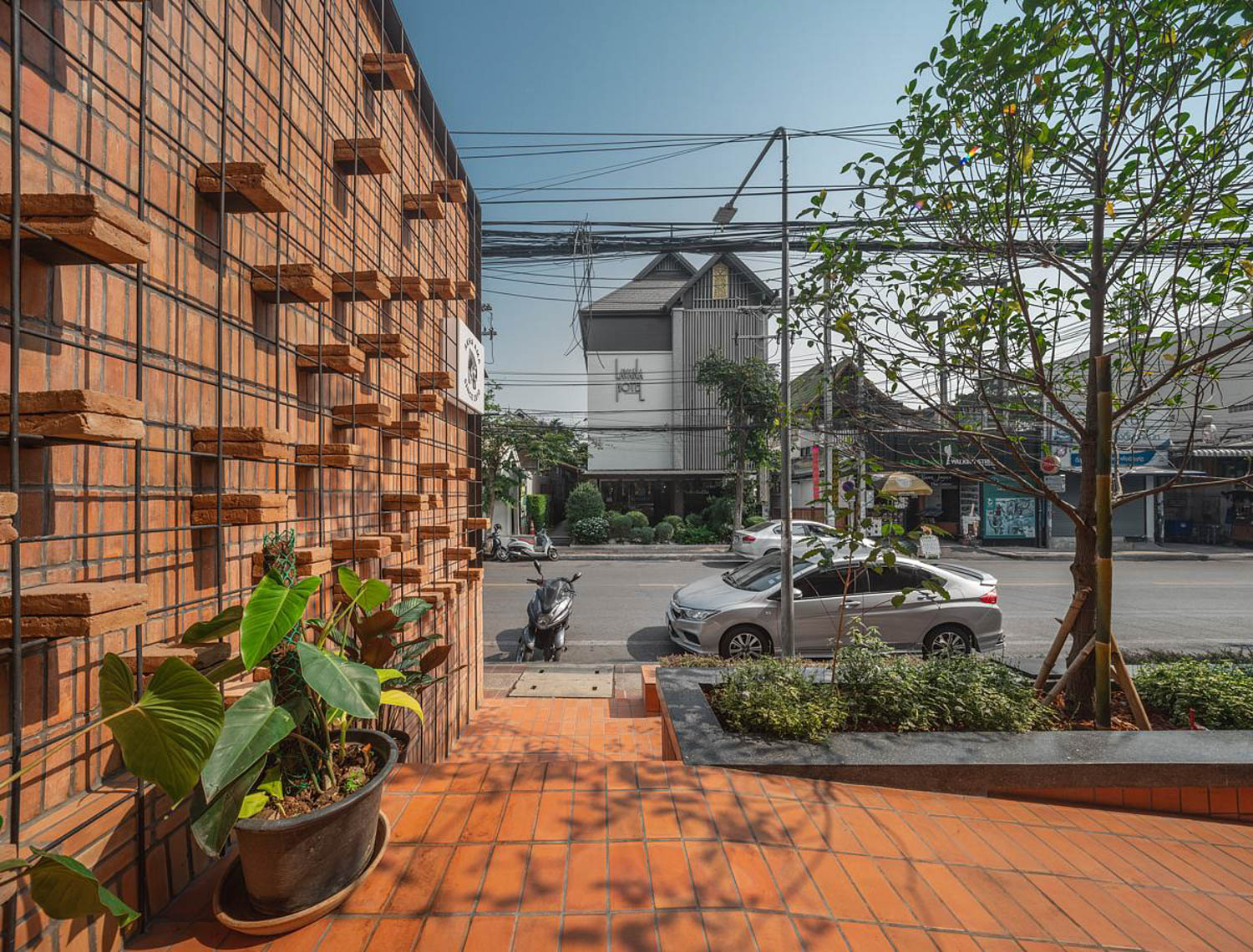
What design elements make the front courtyard of Akha Ama Coffee an inviting communal space and an integral part of the café’s atmosphere?
The front courtyard serves as a transitional space that gradually shifts the user’s experience from the bustling street to the more tranquil interior of the café. This space also allows customers to observe the flow of people in the city, creating a connection between the café and the urban environment, and enhancing the overall ambiance of the café.
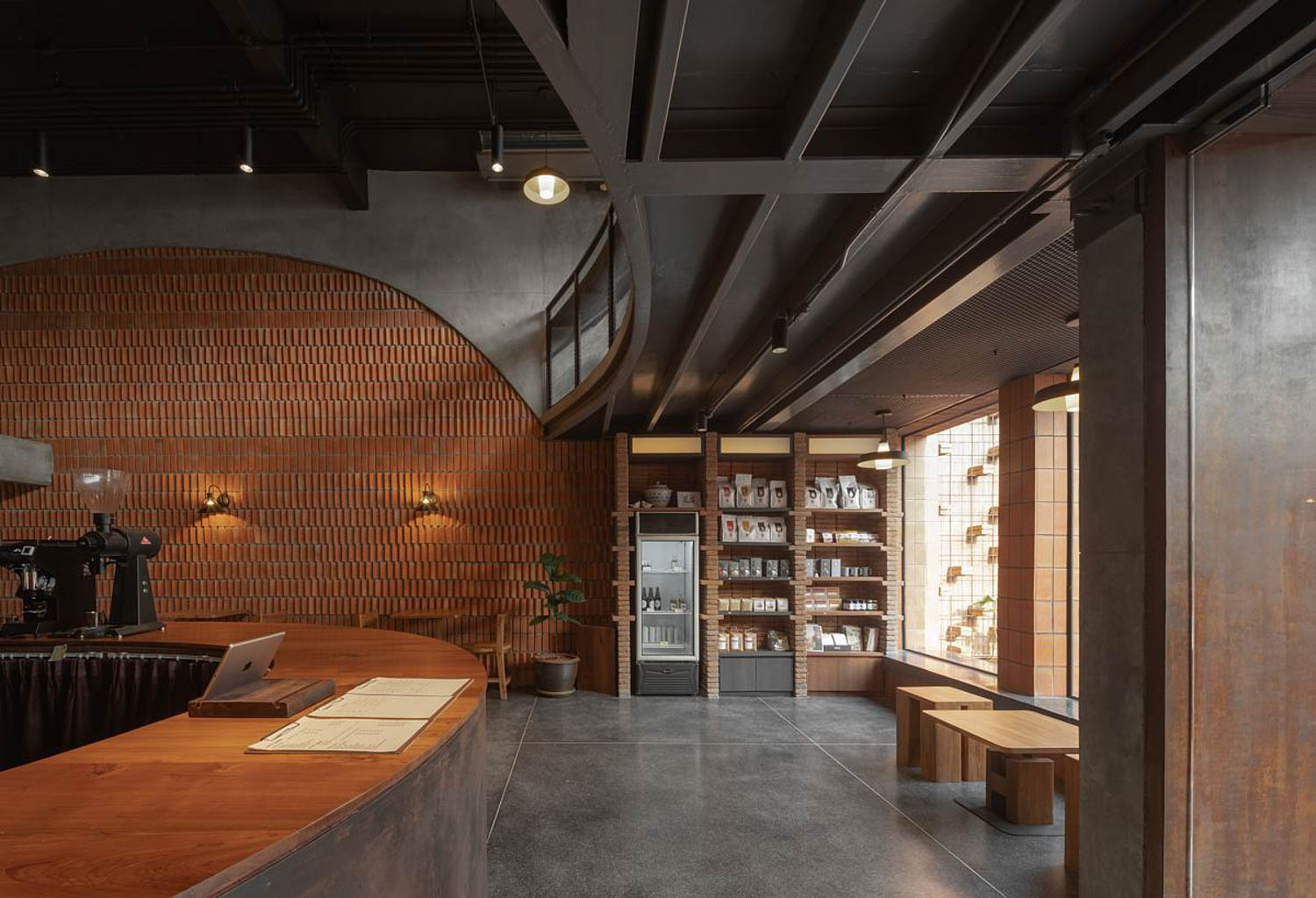
How does Akha Ama Coffee balance the preservation of Chiang Mai’s architectural heritage with the demands of a modern and creative café?
The design of Akha Ama Coffee is grounded in the concept of introducing new uses within a traditional context. We focused on using traditional materials in innovative ways to evoke a sense of continuity with the past, while meeting the contemporary needs of the café. This approach allows the space to resonate with the historical wisdom of the area while being fully functional and relevant in today’s context.
